|
One thing you will surely find in a cemetery are dates. Now I'm talking day of the month and year here, certainly not a social or romantic appointment (date). Birth and death dates are evident by the tens of thousands on the faces of marble and granite gravestones, or etched upon bronze plaques. Our cemetery records are filled with the same, and also include burial dates of those interred here as well. We can't promise that all are correct, but it's certainly our hope. Where a cemetery can generally guarantee a burial date's accuracy, and obituaries can be researched for proper death dates, birth dates of early decedents can sometimes be problematic. In many cases, these were provided by family members and associates, leaving room for error when no birth certificate or church record/family Bible entry was ever made. The date of August 9th is an important one this year for Mount Olivet Cemetery. It marks something a little bit different for us, in addition to supposedly being a famous decedent's birthday. In this particular case, this day marks the official unveiling and dedication date of a magnificent monument at Mount Olivet. The year was 1898, and this was no ordinary tombstone—no sir! This is the most famous gravemarker and site in a cemetery containing over 41,000 souls, so to speak. I'm talking about Francis Scott Key-- author of "The Star-Spangled Banner." For this article, we are more interested in the monument itself, and the day of its official unveiling moreso than Francis Scott Key the man, lawyer, songwriter, and patriot. It is an inaugural member of our Mount Olivet "Monument Hall of Fame," and got there easily through its merit as a true work of art. Interestingly, the monument's namesake, Mr. Key, had been dead for 55 years already before its placement. "Better late than never" I guess, as they say. I'm not overly interested in re-hashing the history of Francis Scott Key (1779-1843), or how he came to write his song in Baltimore Harbor during a 27-hour bombardment of Fort McHenry in September, 1814, here in this particular article. You can find that saga on another page of this very website. Interestingly, this story has been told at the Key monument site in Mount Olivet hundreds, perhaps thousands of times since the mid-19th century. Eager ears have included school children, tour groups and senior center outing participants. I know this from first-hand experience, because I am among the latest to do so over the last two decades. I've also had the good fortune to share FSK's story at special commemorations at the monument site including such events as the annual Memorial Day ceremony put on by the American Legion, and our local Francis Scott Key Post #11. In the last 40 years, we've had some great events here. In 1987, the monument was refurbished, its bronze figures having been tarnished over its first 89 years. Worse than the outer appearance of these sculptures, was the internal rust and corrosion that was happening, as the infrastructure was fast deteriorating. The multiple sculptures were sent to the studio of Eleftherios Karkadoulias in Cincinnati, Ohio. One of the top bronze sculptors and restoration artists in the country, Mr. Karkadoulis did an amazing job and the statuary figures were put back in place "as good as new." A fine event was held by the Francis Scott Key Memorial Foundation to welcome them home after an 8-month sojourn to the midwest. In 1998, Frederick County celebrated its 250th anniversary. One of the signature events of that year took place here in Mount Olivet as citizens commemorated the 100th anniversary of the original unveiling of the monument on August 9th, 1898. It was a fine event, full of pomp and circumstance. 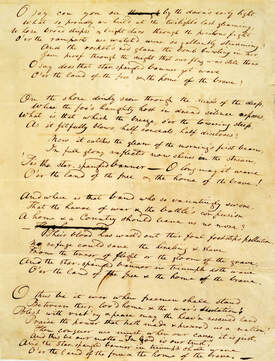 Key's original manuscript Key's original manuscript In more recent history, two events were held in 2013 and 2014 to celebrate the bicentennial of the Battle of Baltimore and the writing of "the Star-Spangled Banner" as a major part of Maryland commemorative activities associated with the 200th anniversary of the War of 1812. We marketed these as "Anthem & Author Reunited" and "Home of the Brave." I worked for the Tourism Council of Frederick County at the time and we worked in advance to make sure that visitors would have products here in Frederick to assist in interpreting Francis Scott Key's connection and ties to town. This came in the form of interpretive displays, with Mount Olivet Cemetery being our prime location to tell his story. We also concocted a great scheme in taking the unique opportunity to bring Key's original song manuscript to his former hometown. Knowing that the latter task would be nearly impossible in the actual anniversary year of 2014, our local planning committee set its aims on obtaining the document for Flag Day, 2013. In case you didn't know, Key's "Star-Spangled Banner" manuscript resides at the Maryland Historical Society. We knew it would be displayed at Fort McHenry during the anniversary. Permissions and grant funding (for transport and security) were obtained and the 2013 "Anthem & Author Reunited" event became a reality for a special three-day commemoration in mid-June a decade ago. The priceless document was brought to Frederick, where it first went on public display at Frederick City Hall on Friday the 12th. Here, thousands of visitors had the opportunity to view the document under glass as it "laid in state" within the first floor hearing room under the watchful eye of a ceremonial guard provided by both Frederick City Police, The Frederick County Sheriff's Office and Maryland State Police. The latter held the role of escorting Key's manuscript to Frederick from "Charm City." Various activities throughout the three-day event ushered in a new collection of interpretive panels placed around Frederick City to help explain Francis Scott Key's importance here as the third point of a "Key Heritage Triangle," if you will. Baltimore is the home of Fort McHenry and the manuscript, and Washington, DC served as residence and primary employment site to Key in adult life and the Smithsonian Museum of American History is the site where you can find the original flag that flew over Fort McHenry on that fateful day of September 14th, 1814. But little old Frederick and Mount Olivet hold the literal, and figurative, "key" to the story, as the first, and eternal, home of the author. This is also where he started his highly successful law career. Interpretive exhibits, skillfully produced with the help of David Guiney (Interpretive Direction), Ruth Bielobocky (Iondesign) and artist Richard Schlecht were unveiled all over town at places such as Courthouse Square, the Hessian Barracks (Maryland School for the Deaf), Harry Grove Stadium, and the Frederick Visitor Center where the exhibit enshrines one of the legendary British bombs that "bursted in air." These would be unveiled in separate ceremonies on that opening day of the 2013 celebration, and on Saturday the 13th. The grand finale occurred at Mount Olivet Cemetery on Flag Day itself as the manuscript was mightily escorted through the streets of Frederick by the US Army's ceremonial Old Guard Unit, aka the 3rd U.S. Infantry. You may know them from their work with memorial affairs missions, most notably funerals and ceremonies held at Arlington Cemetery. On this day in June, 2013, the contingent made quite a scene as they marched from Frederick City Hall through a number of city streets before turning down South Market and into the cemetery's front gate. The soldiers stood at attention in front of the Key Monument as the original manuscript came as close as possible to its original author. An estimated 1000 spectators were on hand. If you believe in spirits and the afterlife, I would guarantee that Francis Scott Key was smiling down with greatest admiration on the scene that day. But there were others as well.  A few more "banner" days that brought smiles to more than just Francis Scott Key were September 13th and 14th, 2014. This was the anniversary of the Battle of Baltimore and the event titled "Home of the Brave." We not only celebrated Key on that day, but also those who he said to have been the true inspiration for his writing of the song originally entitled "The Defense of Fort McHenry." While visiting Frederick on August 6th, 1834, Francis Scott Key made a speech at Courthouse Square during a large ceremonial banquet. Many veterans of the War of 1812 were in the audience and this would be one of a few rare occasions in which Key discussed his remembrances associated with writing "The Star-Spangled Banner." Key would give credit to these former soldiers: "The song, I know, came from the heart, and if it has made its way to the hearts of men, whose devotion to their country and the great cause of freedom I know so well, I could not pretend to be insensible to such a compliment. With it came an inspiration not to be resisted; and even though it had been a hanging matter to make a song, I must have written it. Let the praise, then, if any be due, be given not to me, who only did what I could not help doing; not to the writer, but to the inspirers of the song!” …I again thank you for the honor you have done me; but I can only take the share of it. I was but the instrument in executing what you have been so pleased to praise; it was dictated and inspired by the gallantry and patriotism of the sons of Maryland. The honor is due, not to me who made the song, but to the heroism of those who made me make it…" We have 109 of those War of 1812 veterans buried here in Mount Olivet, the second highest concentration of 1812 soldiers in all of Maryland, second only to Greenmount Cemetery in Baltimore. We used the occasion to properly mark these men with special plaques found throughout our grounds and made possible thanks to funding from the Maryland State War of 1812 Commission and the Francis Scott Key Memorial Foundation. The cemetery hosted a two-part commemoration at the Key monument including a Saturday night luminary event recognizing those very 1812 vets called out by Francis Scott Key at that 1834 event at the courthouse. Boy Scouts with Tiki torches were positioned at the 109 graves of 1812 veterans in Mount Olivet, and a procession led by horse and carriage winded its way through the cemetery making 15 stops to here from re-enactors portraying former Frederick residents at their respective gravesites. This was followed by a solemn roll call of their names, capped with a fine fireworks display at Grove Stadium behind the silhouette of Francis Scott Key atop the monument. The next morning at sunrise, a choir sang all four stanzas of the national anthem, and a crowd of 300 were entertained by re-enactors depicting Francis Scott Key, Abraham Lincoln and James Monroe. Looking back, these events were quite memorable and I consider myself so very lucky to have participated in the planning and execution of a few of them. the lasting legacy of course is the interpretive exhibits left behind in the form of NPS-standard tabletop information displays. Mount Olivet was the recipient of a few of these as well, and they continue to assist tourists that come each and everyday to learn more about the man responsible for writing our national anthem, and taking their selfie with Frederick's most famous monument. 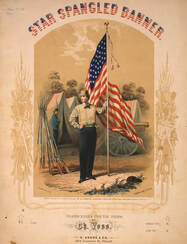 Speaking of which, none of the events just recounted compare to the grand excitement generated back in 1898 when the monument was first revealed to an audience of thousands. I want to tell you about the genesis of the monument itself, and how it came to be. A good starting place is the 1860s and the American Civil War. Fifty years after its initial writing, there was not an opportunity to celebrate "The Star-Spangled Banner" with a fancy commemoration. You may recall that Baltimore was under martial law. Meanwhile, here in Frederick, on September 14th of 1864, the feeling was more one of relief than nostalgic patriotism as we had just witnessed a small skirmish west of town on July 8th, and a day later, a full-pitched battle down at Monocacy Junction, south of town. In fact, we were lucky that the banks paid a ransom levied by Confederate Gen. Jubal Early, keeping our town intact and not in ruin by the torch. Just ask nearby Chambersburg, Pennsylvania how they were feeling after their town was burned to the ground in the early morning hours of July 30th. The song and its author were re-remembered however through the war. Union military bands and musicians, in search of patriotic music, curiously blew the dust off the sheet music of the old song, and it became an instant favorite of both the players as well as the rank and file themselves. By war's end, the song had regained the interest, and adoration (at least in the north), as it had first enjoyed in 1814. People of Frederick began recalling the Key family and in particular, Francis' time spent here as a youth, and again as a fledgling lawyer. This led citizens to ask if Key was still alive, or not? When realizing he had died in 1843, folks began to search for his gravesite, ultimately disappointed to learn that he was reposing in Baltimore and not Frederick. Many questioned why he was not buried in our beautiful new garden cemetery of Mount Olivet? The answer was simple —at the time of Key's death, there was no Mount Olivet. This land, south of downtown Frederick City, was nothing more than rolling farmland along the Georgetown Pike and the "Newly Designed Road" which crossed Carrollton Manor leading to the Potomac and Virginia beyond. The cemetery wouldn't be opened until May, 1854, more than a decade after Key's death in January, 1843 at the age of 64. Key had died of a lung infection (pleurisy) while visiting his oldest daughter, Elizabeth Howard, a resident of Mount Vernon Place, adjacent Baltimore's Washington Monument. He was not buried back at his current home of Georgetown/Washington, DC, but rather in nearby Old St. Paul's Cemetery, a stone's throw from Camden Yards and the University of Maryland's School of Medicine campus. Francis Scott Key's mortal remains were placed in the Howard family crypt, where his wife Mary would join him upon her death in 1859. The rekindled interest in "the Star-Spangled Banner," and songwriter prompted some of Frederick's leading citizens, led by Mr. George M. Potts, to lobby Mrs. Elizabeth (Key) Howard and her sister, Alice (Key) Pendleton for reburying the Keys in Mount Olivet. From what I have read, it seems to have taken a while for the ladies to warm to the idea. One event that could have swayed hesitancy occurred in spring of 1866 with the death of Francis Scott Key, Jr. Perhaps there was limited room in the Howard family vault to accommodate this family member? Or maybe free grave lots were offered to get the Keys back to Frederick? Regardless, the selling point of having FSK return to his native home of Frederick was paramount—he needed to be "poetically" laid to rest as he had supposedly requested to be buried "beneath the shadows of the everlasting hills" of Catoctin Mountain. This was a great tribute to Frederick and the town he knew well in his youth, site of the first courthouse of his law career, and not far from his family estate of Terra Rubra, near present day Keymar (Carroll County). Besides, Key's parents and sister had already been reinterred here in 1855 from former resting places in Frederick's All Saints Protestant Episcopal Burying Ground, once located along Carroll Creek in the heart of Frederick City. Permission was ultimately given by the Key sisters to re-inter the bodies of Francis Scott, Mary Tayloe (Lloyd) Key and Francis Scott Key, Jr. They would be brought to Frederick by train on October 1st, 1866 and buried in Mount Olivet's Area H/Lot 436 without any fanfare, whatsoever. Residents and tourists alike would afterward make pilgrimages to see the final resting place of the man who wrote "The Star-Spangled Banner." However, many visitors were underwhelmed by such a modest gravesite for such a patriotic citizen. He was the face and "pop star" of the Second War of Independence for goodness sake. This was also a time of Victorian extravagance where grand monuments were being erected for Civil War soldiers and officers alike, even those who lost in war on behalf of the Southern Cause. Why then, did Key not have something more substantial and fitting to reflect his deeds? Descriptions and a few surviving photos show Key's original gravesite embellished with landscaping, flower pots, and eventually a flagpole. However, it wasn't enough for a citizen who was an automatic entry into the history book of our nation. 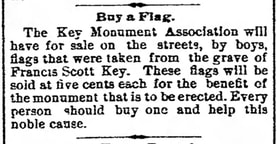 Frederick News (June 6, 1893) Frederick News (June 6, 1893) The seed was now planted for something bigger and better for Francis Scott Key. However, it would take over three decades to be finally realized. The seriousness of the matter definitely ramped up in the late 1880s as the founding of the Francis Scott Key Monument Association would soon follow. Various fundraising efforts were undertaken, aided by private donations, government appropriations and even schoolchildren being asked to save and send pennies for the patriotic project to give "The Star-Spangled Banner's" writer a monument equal to his deed and legacy. In 1896, the Key Monument Association, under the leadership of William C. Birely requested bids for the Frederick project. A man named Folger McKinsey, then editor of the Frederick News newspaper, headed up the monument's design committee, and would correspond with interested firms. It was McKinsey who truly championed the movement upon his arrival in town in 1888. He would use his media platform to truly resuscitate a movement that had started a few decades earlier but sputtered out after raising little money. The Association was ultimately impressed with a design submitted by the New York City studio of Alexander Doyle. It featured Key and allegorical figures. 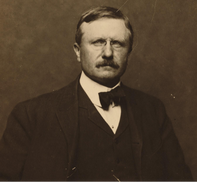 Alexander Doyle (1857-1922) Alexander Doyle (1857-1922) Mr. Doyle was born in Steubenville, Ohio, and spent his youth in Louisville (Kentucky) and St. Louis (Missouri) before going to Italy to study sculpture in Bergamo, Rome, and Florence, studying with noted experts Giovanni Duprè, Carlo Nicoli and Fernando Pelliccia. While there, he became a member of the Royal Raphael Academy. After returning to the United States, he settled in New York City and became one of the most prominent sculptors of the era. There are three statues by Doyle in National Statuary Hall in Washington, DC: Thomas Hart Benton, Francis Preston Blair, Jr., and John E. Kenna. Alexander Doyle became a sculptor of marble and bronze monuments of historical figures including Civil War heroes and other prominent persons. His work can be found throughout the United States including in Washington, DC, Missouri, Alabama, New York, Ohio, Indiana, Georgia, and Mississippi. 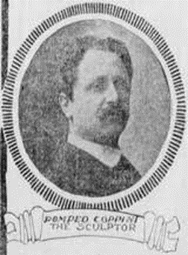 Pompeo Coppini (1870-1957) Pompeo Coppini (1870-1957) In the case of Frederick's Francis Scott Key monument project, Doyle would receive the request for proposal at a time in which he was busily finishing his project involving the three figures for Statuary Hall. He had recently made the acquaintance of a 24-year-old immigrant from Italy named Pompeo Coppini. The two men had a chance, but positive, first meeting aided greatly by Doyle's ability to speak Italian since Coppini could not read or write English. Unfortunately, Mr. Doyle had no work for the young Italian who had freshly arrived in New York in early 1896. However, he told Coppini that he foresaw opportunities in the near future after finishing his present project for the US Capital. Soon thereafter, Coppini learned of another project needing assistance due to a strict deadline. With Doyle's reference and introduction, Pompeo Coppini would be hired to help a fellow New York sculptor named Roland Hinton Perry on a project for the opening of the new Library of Congress in Washington, DC. This was the Fountain of Neptune which survives today. Coppini assisted Perry to its completion in November, 1897. 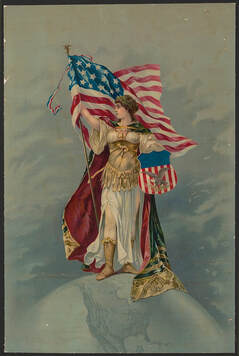 Columbia Columbia Immediately after finishing the Neptune Fountain, Coppini returned to see Alexander Doyle. The young immigrant's timing could not have been better as this was when Doyle received a call for proposal from the Francis Scott Key Monument Association. The project offered $10,000, but needed to be completed in time for Flag Day, 1898. In 1987, Judge Edward S. Delaplaine wrote a brief history of the monument entitled Doyle and Coppini: Sculptors of the Francis Scott Key Monument. Here is the story of that fateful moment for the young Italian sculptor as he received his first major work in America, setting in motion an amazing career in the public arts. "Doyle picked up the letter and explained to the young Italian the anthem entitled : "The Star-Spangled Banner," and how it came to be written. It seemed an excellent subject for sculpture; but to enter the competition it was necessary to submit a model in accordance with specifications prepared in Frederick by the Key Monument Association. Coppini, unfamiliar with the English language, was not capable of entering the competition, while Doyle, having completed a heavy load of work, was looking forward as usual to a long summer vacation with his family at Squirrel Island, Maine. However, the prospect for a sculptor appeared fascinating. Coppini had won the confidence of Doyle and an agreement was reached that Doyle would enter the competition while Coppini would be allowed to use his studio to make the pen and ink sketch for it and also do the sculpture in the event that they should win the award. The model was entered in the competition and it won the award on February 16, 1897. It was agreed that below the statue of Key would be three figures symbolizing American Patriotism. In the center would be Columbia, the lovely symbol of all that is greatest and best in the United States of America. To serve as a model with "a beautiful, queenly head" to pose for the figure of Columbia, Coppini selected Elizabeth di Barbieri, a native of New Haven, Connecticut. She agreed to pose for him and not long after she began, Coppini fell in love with her, and in the winter of 1897, the model promised to marry the sculptor. They were wed in New Haven on February 27, 1898. Down through the years there has come the story that the original idea of the group of three figures at the base of the monument was to have Columbia with her flag resting upon her shoulder; to have the youth to the right extending his hand in a vow of fidelity; and to have the little child to the left -- failing to grasp the significance of the lesson of Patriotism because of his tender years --extending his hand in imitation of his older companion. According to this tradition, Coppini during the sculpturing made substantial changes in the positions of the figures. He brought Columbia's flag forward instead of having it resting upon her shoulder. The youth to the right placed his hands on a sword to symbolize Defense. The little child to the left held a lyre to symbolize Music and Song. Ordinarily Coppini was a fast worker. But Doyle had met with a number of delays, one of which was due to the illness and death of his father, with the result that the Committee on Design of the Key Monument association became worried the the sculpturing might not be completed in time for the dedication of ther monument early in August. The committee urgently requested Doyle to have the work completed by June 14, 1898. The committee had requested that the text of the four verses of "The Star-Spangled Banner" be added to the back of the monument. Doyle asked Coppini to do this modeling even though he was not familiar with the English language. This was the young Italian's comment on the addition to the monument: 'All the lettering of the Star-Spangled Banner tablet in the back of the memorial were modeled by me in clay and copied from a print of the National Anthem, letter by letter, before I was able to read a word of it, but knowing its meaning as Sculptor Alexander Doyle translated them for me, as he could speak and write Italian as well as I, having spent part of his youth and schooling in Carrara, where his father owned some marble quarries.' (NOTE: For more information on Pompeo Coppini and the reburial of the Keys and son Francis Scott Key, Jr., I suggest reading back editions of Stories in Stone published previously. Click highlighted links.) The date of grand ceremony had to be moved back to August, but a cornerstone laying ceremony would still take place on June 14th, 1898. Weeks earlier on May 18th, the bodies of Mr. and Mrs. Key had been moved to a vault, placed below the site of the proposed monument. The laying of the project's cornerstone would prove quite impressive and drew thousands of spectators according to the newspaper reports. The fraternal order of Freemasons took charge of this sacred ceremony on behalf of the Key Monument Association. On June 14th, Frederick would find itself decked out with flags flying, and businesses adorned with colorful, patriotic bunting. A parade led many dignitaries and onlookers through the streets of Frederick en-route to Mount Olivet and the site of the third, and hopefully final, gravesite for Francis Scott Key. A large platform was erected for spectators to the north of the site under a copse of trees. A choir was also on hand as Baltimore lawyer, and Past Grand Master of the Masons, John M. Carter gave the main address of the day's Flag Day program, as important items within the ceremonial cornerstone were put in place in accordance to Masonic ritual. Unfortunately, there was one low point to report as the spectator stage collapsed shortly into Mr. Carter's remarks. One woman was injured more than others, but thankfully the stage was only 3 feet of the ground. It must have been quite a scene regardless. If anything else, this proved a nice dress rehearsal for the main event scheduled less than two months later on August 9th, 1898. You could say the stage was set! (Sorry) The large parts of granite to comprise the monument's base and pedestal, as well as the delicate sculptures of bronze, arrived in Frederick from New York by train. They were brought to the cemetery by horse and wagon, and surely generated conversation and excitement. Newspapers throughout the country talked in great anticipation about the upcoming unveiling to be held in the small western Maryland town for one of the country's top patriots. This was also the home of Civil War, flag-toting heroine Barbara Fritchie and recent Spanish-American War hero Commodore Winfield Scott Schley, whose heroics in July, 1898 while in command of Admiral Dewey's flagship, the Brooklyn of the North Atlantic Fleet, helped destroy the Spanish naval fleet ensuring victory to Teddy Roosevelt and his legendary Roughriders in Santiago, Cuba. 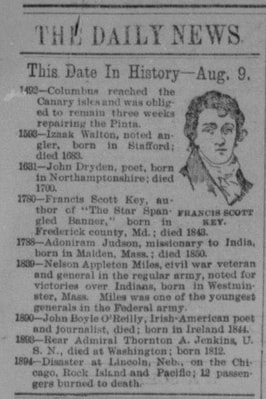 Frederick News (Aug 9, 1898) Frederick News (Aug 9, 1898) Key's birthday was rightfully considered for the new date of dedication. However, not having the internet and instant information at one's fingertips caused a bit of a problem. Mount Olivet's vital records for the Keys followed in accordance with the information provided on the decedents' gravestones. likely erected in 1866/1867 following their re-interment here. This is a point of contention as Key's tombstone advertised August 9th, 1780 as his birthdate. Unfortunately, this was an error to be realized later, as he had actually been born on August 1st, 1779. I was amazed to find this erroneous birthdate appearing in the Frederick News on the day of the big event. It was understood to be the day by many apparently. Remember, before criticizing, the people of this era did not have access to Ancestry.com. Regardless, the dedication ceremony took place on Tuesday, August 9th instead of Monday, August 1st, 1898. Once again the town was decked out in red, white and blue pageantry. A rainy morning gave way to ample sunshine after noon, just in time for a lengthy parade that launched from the North Market Street Fountain at 2pm. The central attraction of the parade was the 6th US Artillery Band, and the formation was led by Chief Marshall E. Y. Goldsborough. Other musical troupes included the Knight Band of Baltimore, and local favorites in the Harmony and Yellow Springs bands. Maryland's Fourth regiment, National Guard, had not been deployed in the war as yet, and received permission to attend the dedication as a group. in addition, Grand Army of the Republic members from around the area, along with a large contingent from Baltimore, came to town to participate. This was fitting since it was the Union Army that reintroduced Key, and his catchy song about the flag under attack by the British, to later generations than those who had experienced the war of 1812 in person. The fire companies of town, at one time doubling as our first militia units, were on the scene in their finest attire, with their polished equipment at hand. They certainly knew how to enhance a parade. The Continental American Guards were dressed in Continental Army dress harkening back to the American Revolution in which Key's father, John Ross Key, had participated, ultimately achieving the rank of captain. It was this same gentleman buried within Mount Olivet's Potts Lot in Area G, who introduced his young son to the immortal patriot of American patriots, George Washington. Other important guests on hand that day of August 9th, 1898, were speakers Emily Nelson Ritchie McLean, destined to become the President General of the United States Daughters of the American Revolution seven years later, and beloved local minister Rev. Osborne Ingle from All Saints Protestant Episcopal Church who would deliver the ceremony's invocation. In fact, it was Rev. Ingle who presided over the reburial of the Keys in Mount Olivet 32 years earlier in 1866. The main orator of the momentous occasion was Henry Watterson, the son of a U.S. Congressman from Tennessee, who had became a prominent journalist in Louisville, Kentucky. He would also become a noted author and partial term U.S. Congressman, and part-owner and editor of the Louisville Courier-Journal. Watterson would later win the the Pulitzer Prize for editorials written regarding America's entry into World war I. Key Monument Association President William C. Birely, and Secretary and Monument Design Chair Folger McKinsey, who would eventually leave the employ of the Frederick News for greater fame with the Baltimore Sun newspaper, could not have been prouder of the finished work done by Mr. Doyle and Signore Coppini. The monument, and its symbolic figures, were hidden from view of the assembled audience by two large flags draped in front of the memorial. At the proper point in the ceremony, Miss Julia McHenry Howard, Key's great-granddaughter, was given the signal to pull a cord which caused the large flags to "fall apart" and expose the grand achievement. At that magic moment, as the audience of thousands exclaimed their satisfaction, huzzahs and emotions, the band struck up "The Star-Spangled Banner," and Folger McKinsey's daughter Lois hoisted an American flag up a flagpole positioned behind, and slightly to the right, of the monument. Thankfully, we have a handful of photographs which captured the event and some of the participants on that special day of August 9th, 1898—even though it was the wrong day. So if you had just one wish to time travel and you wanted to experience this event first-hand, you better have your dates right if you were told it took place on the occasion of what would have been the decedent's 119th birthday. Don't go trusting his old tombstone. We chose the date of August 9th, 2023 to commemorate the 125th anniversary of the monument's original dedication day. Thanks to Teresa Oyler, Joanne Baum and our partners with the Maryland State Society United States Daughters of 1812 for putting together a nice program. The audience could be described as being as modest as Key's original gravesite. I took great pleasure in telling those in attendance the same story I have just told you. Here are a few random photographs taken by Mr. Oscar Gregory.  John Fieseler speaking at 2014's "Home of the Brave" event at the Key Monument John Fieseler speaking at 2014's "Home of the Brave" event at the Key Monument I was particularly glad to see longtime friends and acquaintances in the audience, but one surely stood out. This was my old boss, John Fieseler, recently retired executive director of the Tourism Council of Frederick County/Visit Frederick after a magnificent 23-year run. John has done so much for our county in terms of tourism development, and so much in bettering me as a historian and heritage tourism professional along the way while I was in his employ and out. I am a devout disciple of his for sure, and always will be. John played a hand in all the "recent" Key commemorations and ceremonies over the past four decades I talked about earlier in this article. He's always been the biggest fan of Francis Scott Key, and has joyfully promoted the lawyer/songwriter/patriot as one of the county's leading ambassadors, and equally his monument as one of our most prized tourist attractions. When designing the new Frederick Visitor Center (which opened in 2011), John made sure that a likeness of Francis Scott Key was placed by the front entrance to welcome tourists to not only the award winning center, but to our incredible city and county—two places equally loved by Key, himself.  On this night of August 9th, 2023, John was not just here as a spectator and FSK fan, he was also representing the Community Foundation of Frederick County as a trustee of the Francis Scott Key Memorial Fund. This was started a few years back with the dissolution of the Francis Scott Key Memorial Foundation formed in 1964, whose mission focused on the perpetual care and upkeep of the monument at Mount Olivet Cemetery and educating the community about Francis Scott Key's significance, including his writing of "The Star-Spangled Banner." Last year, monies from this fund allowed us to bring in one of the country's top cemetery restoration experts in Jonathan Appell (Atlas Preservation of Southington, Connecticut) to re-point the monument, repair the base at ground level and re-bronze the statues crafted by Pompeo Coppini in Alexander Doyle's New York City Studio over 125 years ago. In recent weeks, another disbursement from the fund allowed us to put a brick walkway around the monument, an idea and design that was originally proposed back in 2012 by David Guiney of Interpretive Direction. This walkway invites and allows visitors to inspect the monument up close and personal, especially the statuary figures, and the complete "Star-Spangled Banner" manuscript crafted by Coppini on the monument's backside. In coming years, we will be working with multiple local and state partners in an effort to enhance the monument site and build a more thorough "Star-Spangled Plaza" here which will highlight the lasting value and importance of four aspects to our country—the anthem, the flag, the Declaration of Independence and the U.S. Constitution. Back to John Fieseler, he may hold the actual "key" to Francis Scott Key's true birthdate, as he is a resident of Keymar, living in a beautifully restored historic farmhouse within a mile of Key's birthplace of Terra Rubra on Little Pipe Creek. It has been rumored for years that the author of our national anthem could have been actually conceived in John's historic barn. Talk about "the rocket's red glare" and "bombs bursting in air," now that's a hot take! But, sadly a story for another day, not necessarily a "banner one," and of course will require additional scholarly study and research with calculations incorporating a strict, 9-month pregnancy model perhaps culminating on the 9th of August, 1779? As always, thanks for tolerating me and my ramblings. And thank those who helped give Francis Scott Key that final resting place here in Mount Olivet "neath the everlasting hills," and the opportunity for visitors to to see him pointing to the flag his song immortalized both by the "dawn's early light," and "the twilight's last gleaming." Second session starting soon on August 22nd!!!!!!!!!!
History Shark Productions presents: Chris Haugh's "Frederick History 101" Are you interested in learning more about Francis Scott Key and other residents and events important to Frederick history? Want to learn more from this award-winning author and documentarian? Check out his latest, in-person, course offering: Chris Haugh's "Frederick History 101," with a 4-part/week course on Tuesday evenings in late August/early September, 2023 (Aug. 22, 29 & Sept 5, 12). These will take place from 6-8:30pm at Mount Olivet Cemetery's historic Key Chapel. Cost is $79 (includes all 4 classes). For more info and course registration, click the button below! (More courses to come)
0 Comments
Leave a Reply. |
STORIES
|
Archives
July 2024
June 2024
May 2024
April 2024
March 2024
February 2024
January 2024
December 2023
November 2023
September 2023
August 2023
July 2023
June 2023
May 2023
April 2023
March 2023
February 2023
January 2023
December 2022
November 2022
October 2022
September 2022
August 2022
July 2022
June 2022
May 2022
April 2022
March 2022
February 2022
January 2022
December 2021
November 2021
October 2021
September 2021
August 2021
July 2021
June 2021
May 2021
April 2021
March 2021
February 2021
January 2021
December 2020
November 2020
October 2020
September 2020
August 2020
July 2020
June 2020
May 2020
April 2020
March 2020
February 2020
January 2020
December 2019
November 2019
October 2019
September 2019
August 2019
July 2019
June 2019
May 2019
April 2019
March 2019
February 2019
January 2019
December 2018
November 2018
October 2018
September 2018
August 2018
July 2018
June 2018
May 2018
April 2018
March 2018
February 2018
January 2018
December 2017
November 2017
October 2017
September 2017
August 2017
July 2017
June 2017
May 2017
April 2017
March 2017
February 2017
January 2017
December 2016
November 2016

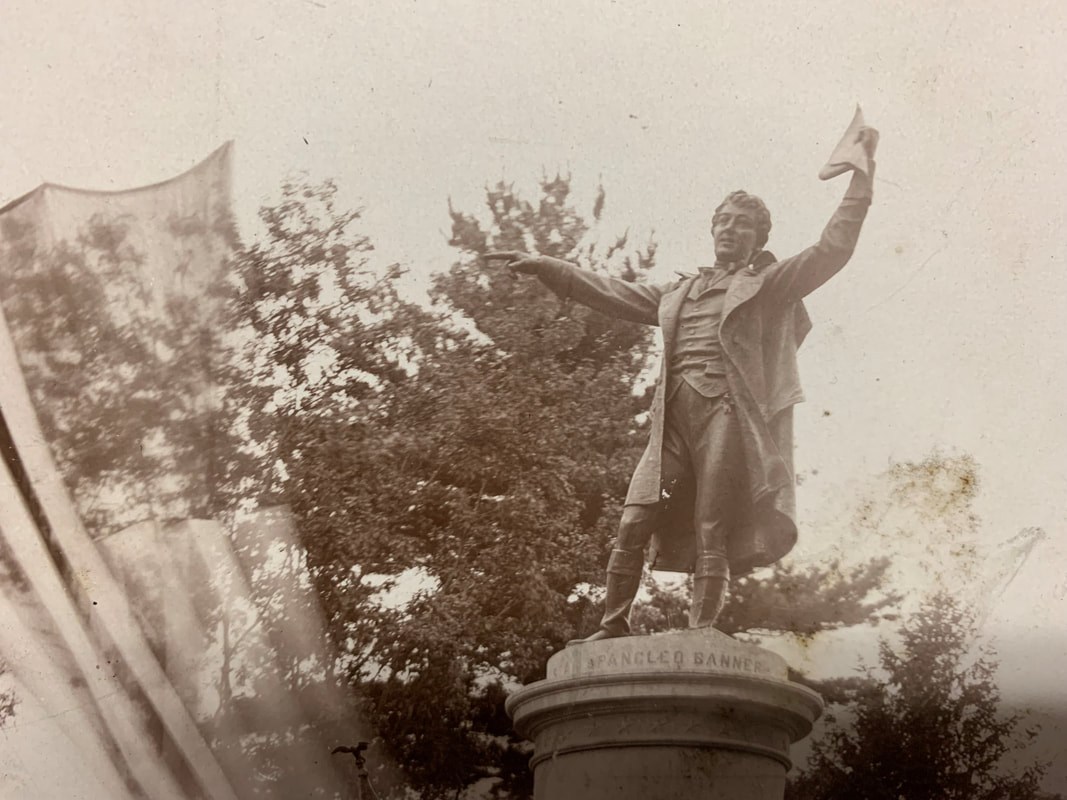
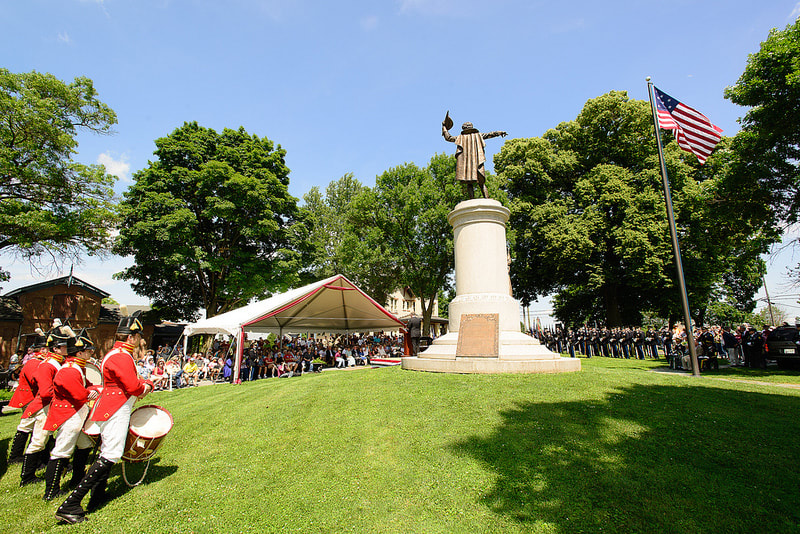
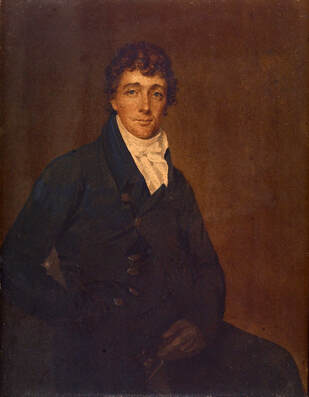
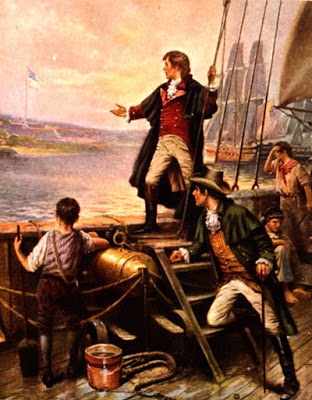
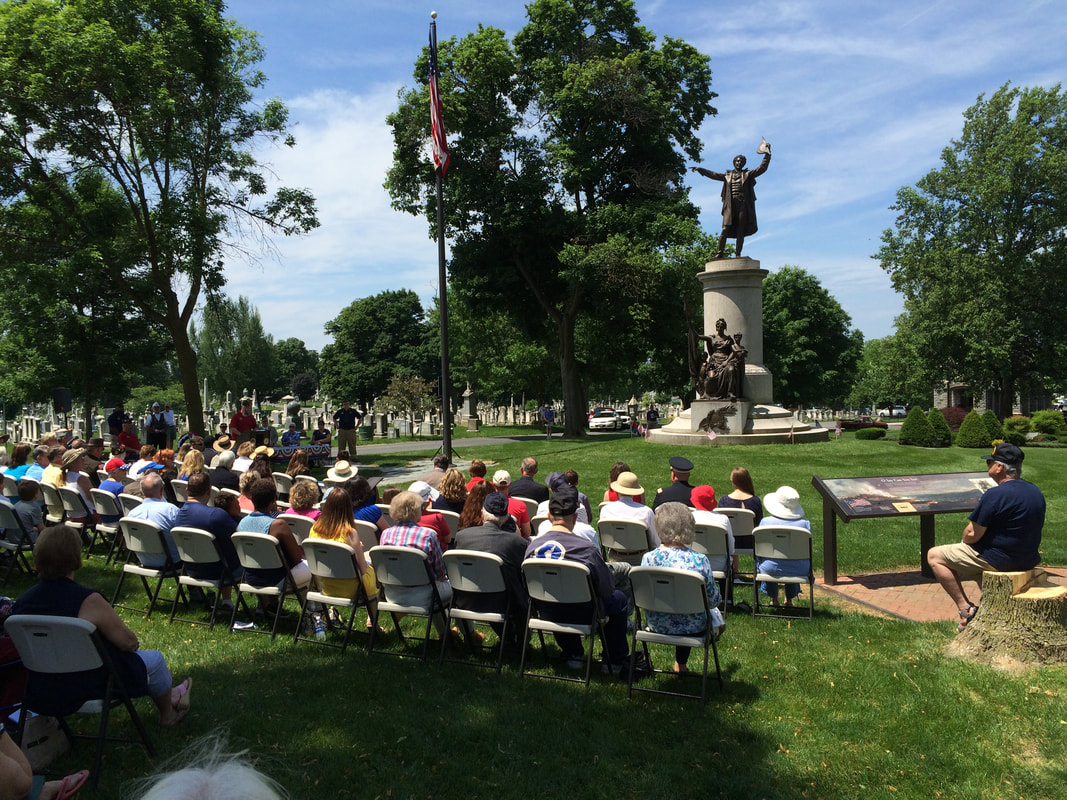
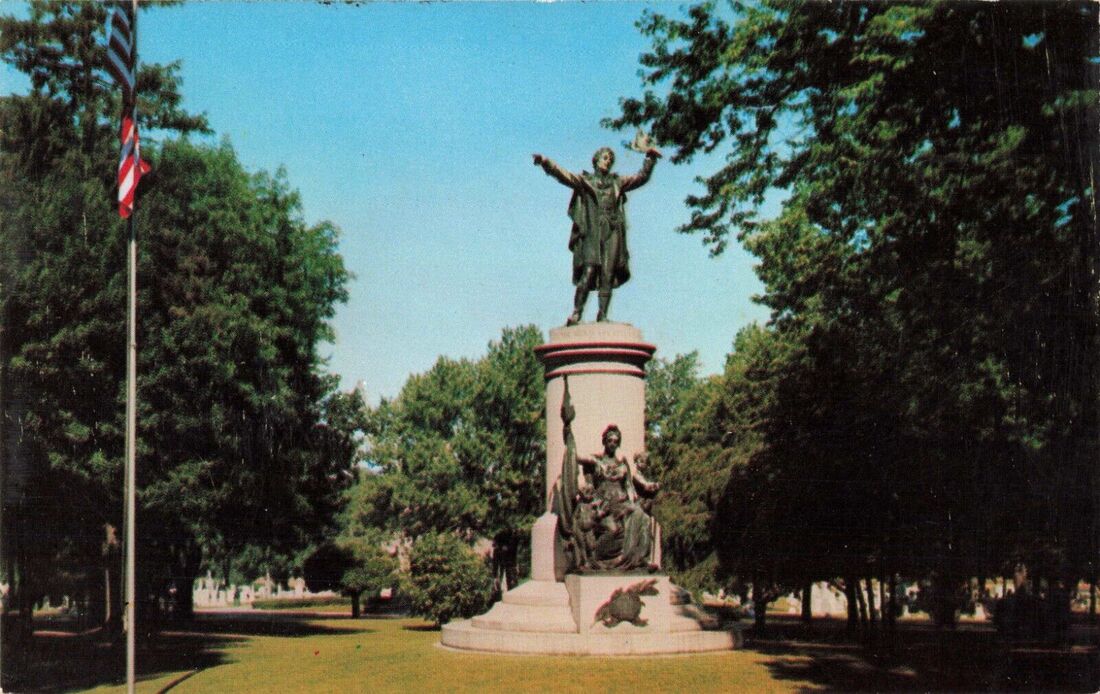
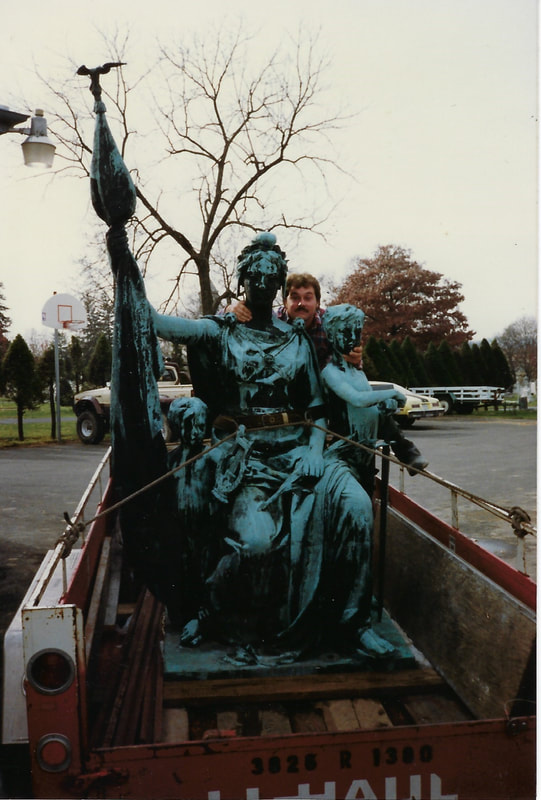
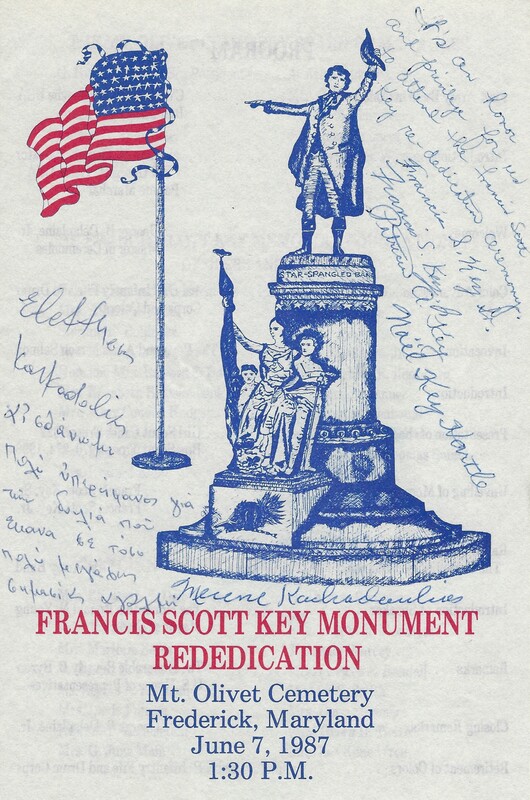
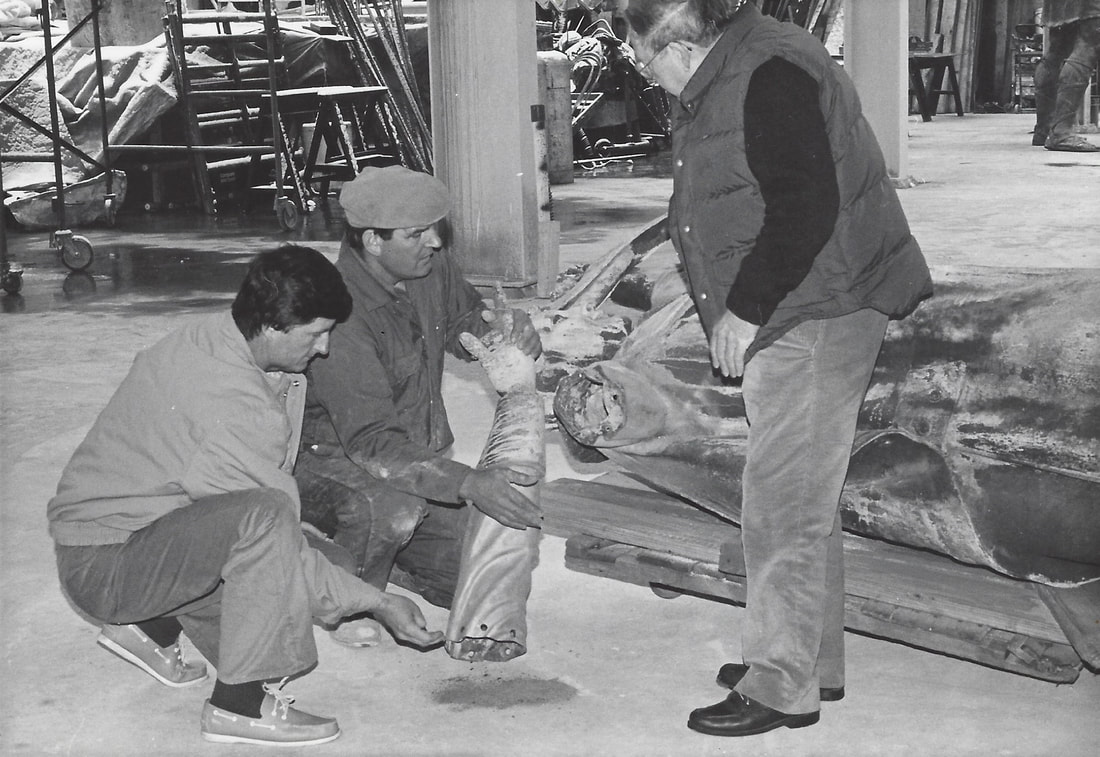
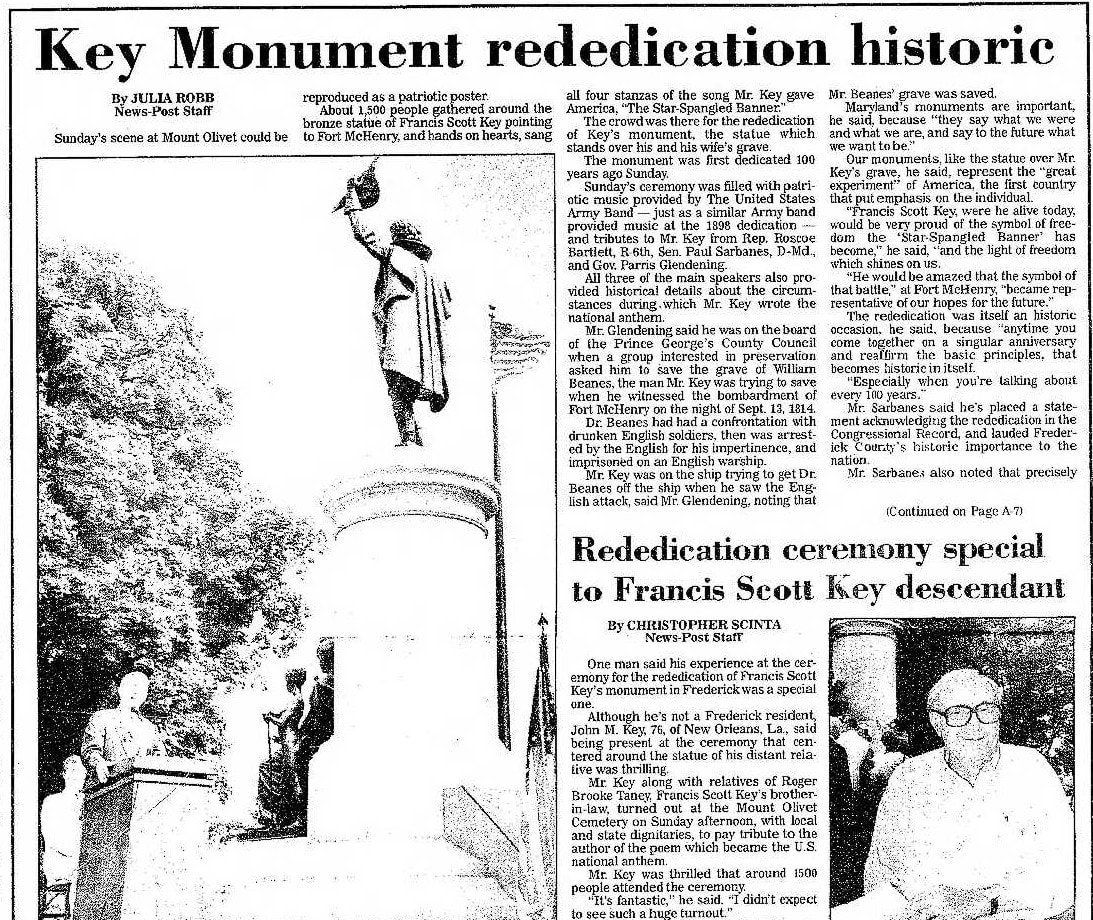
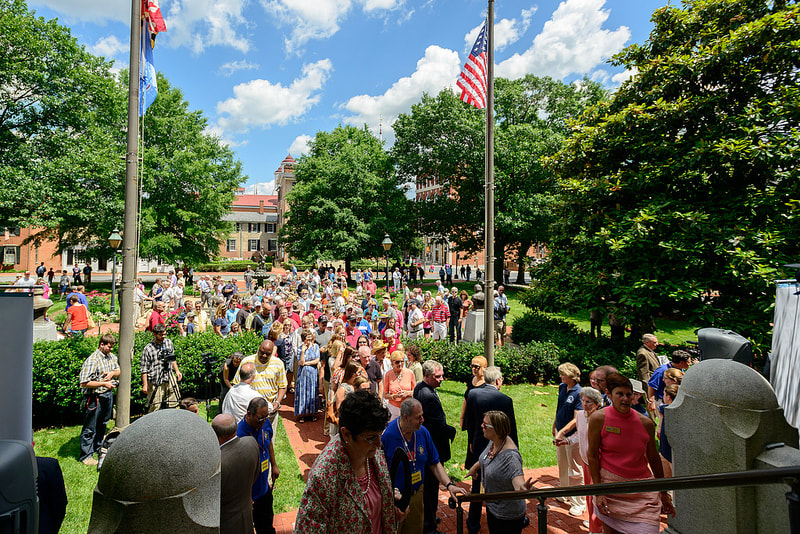
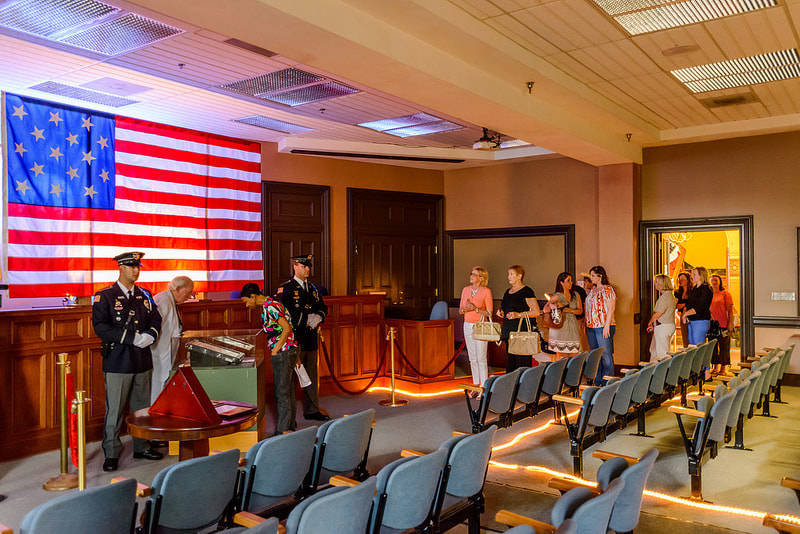

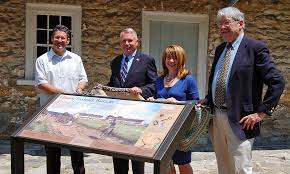
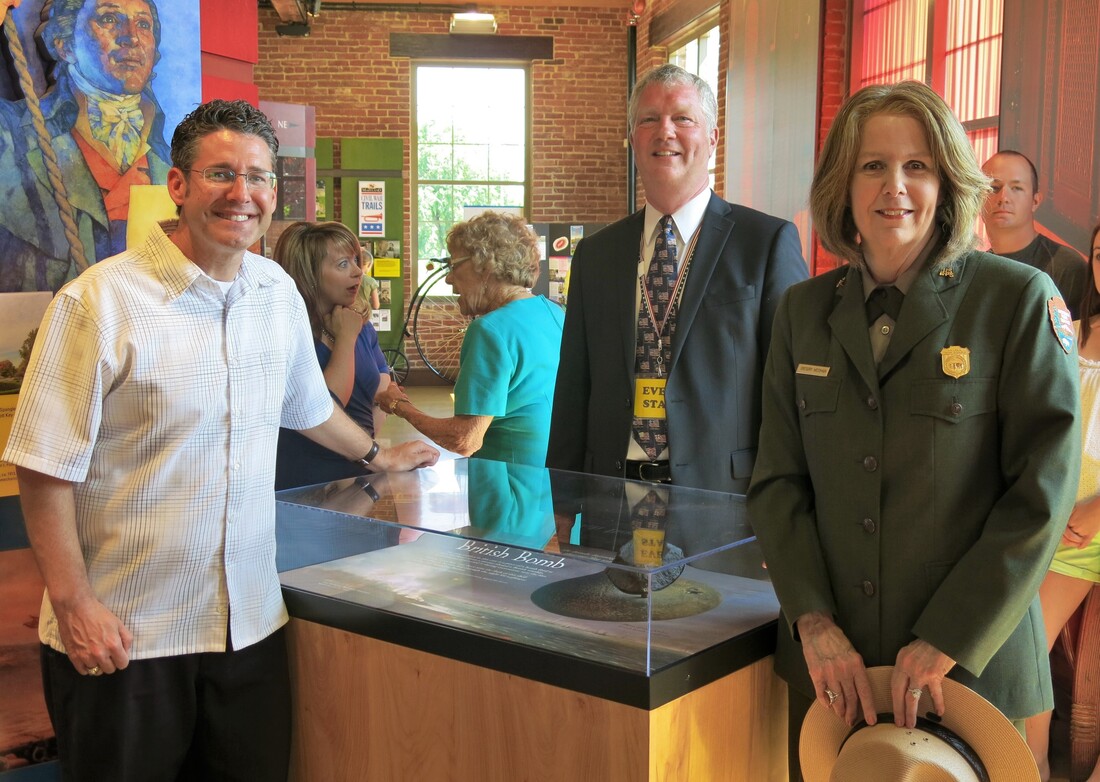
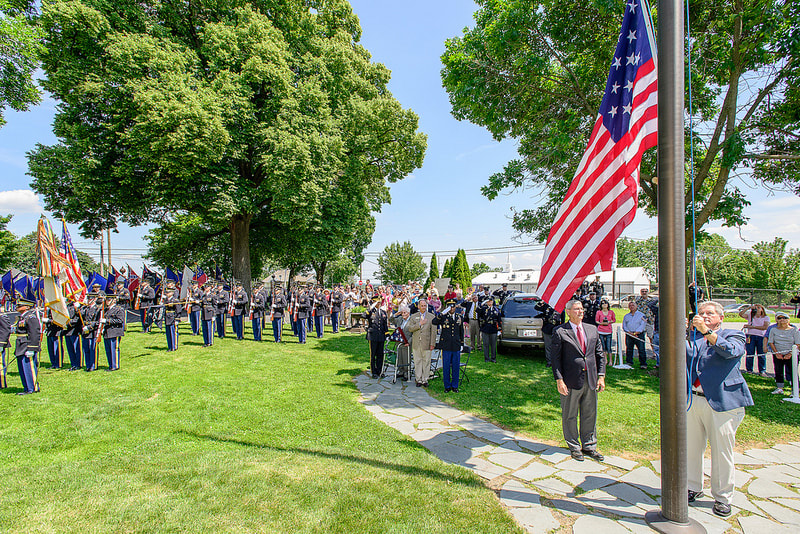
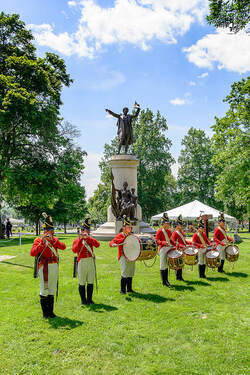
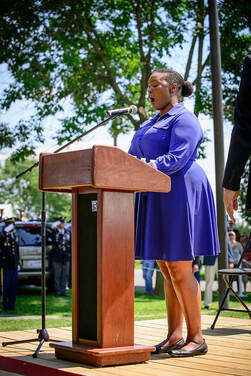

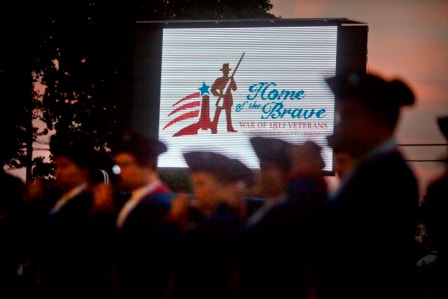
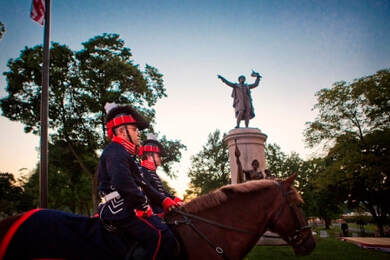
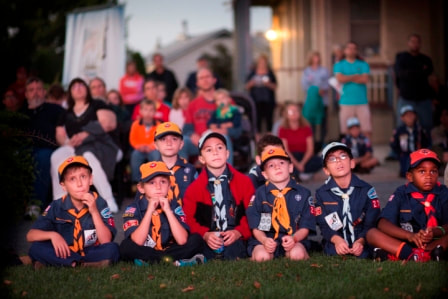
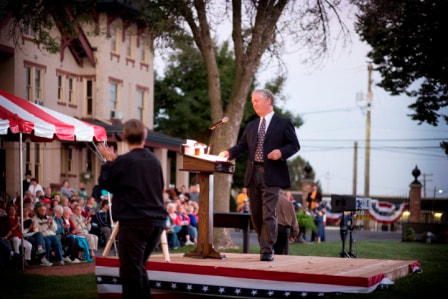
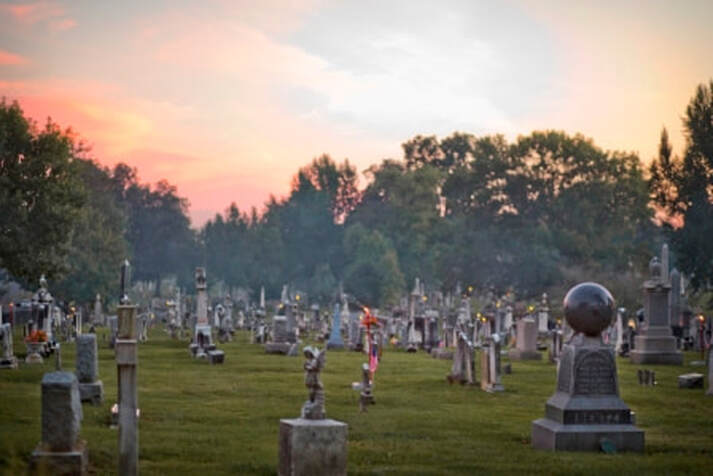
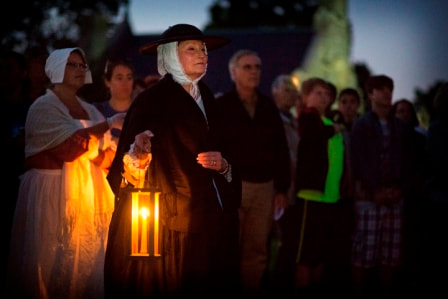
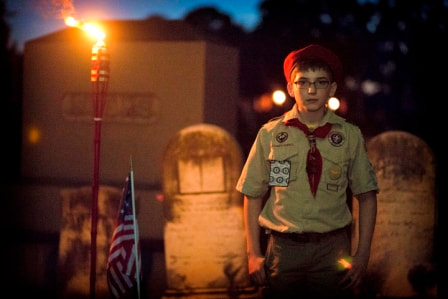
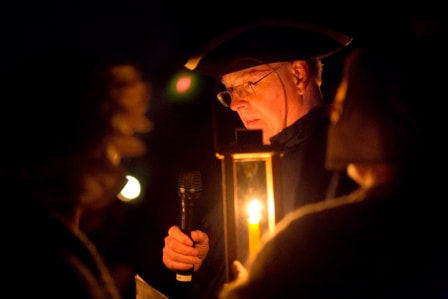
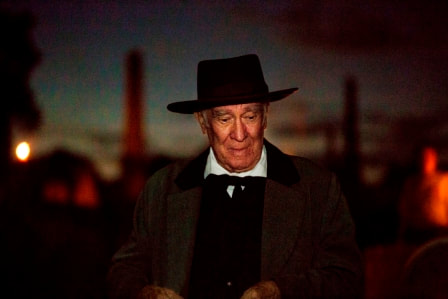
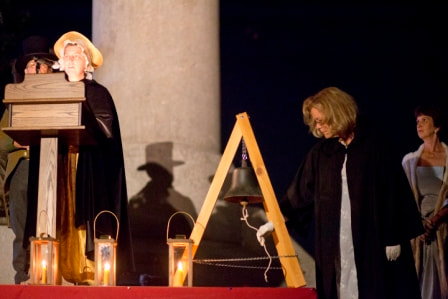
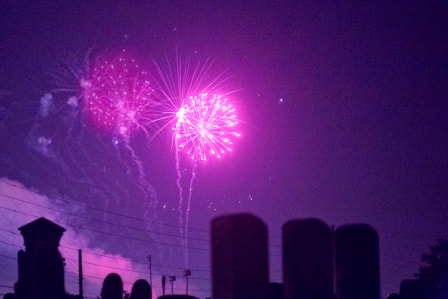
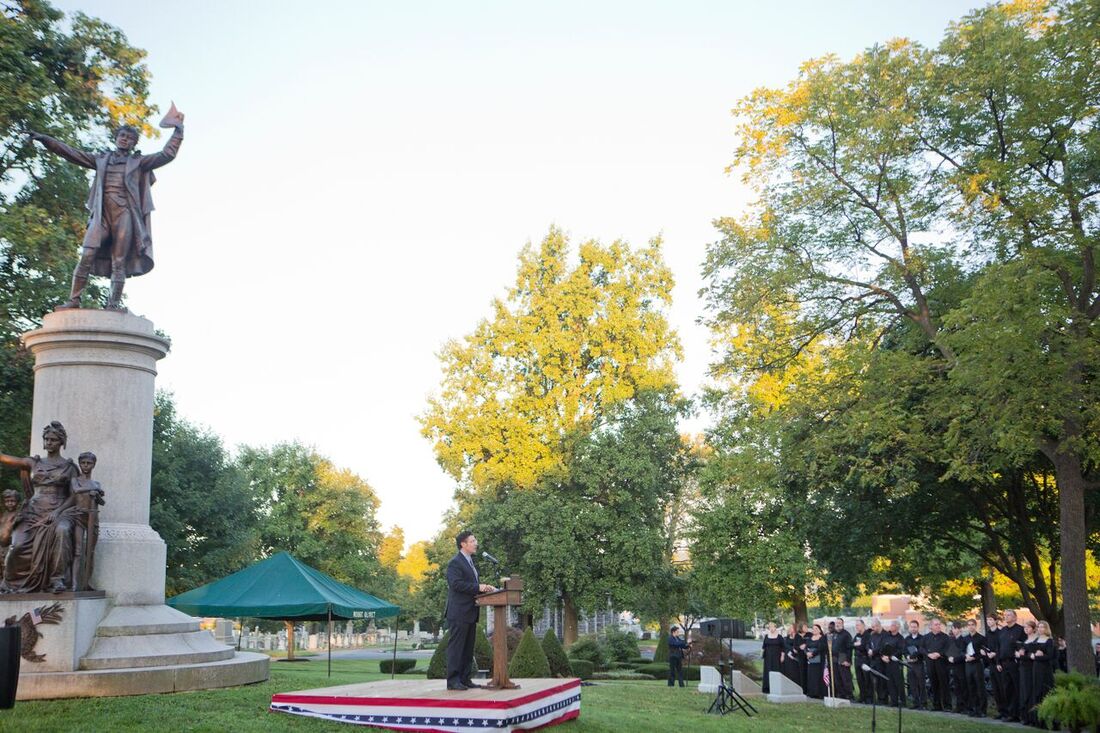
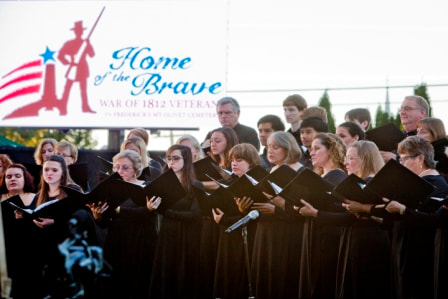
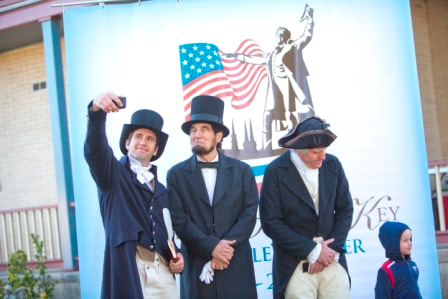
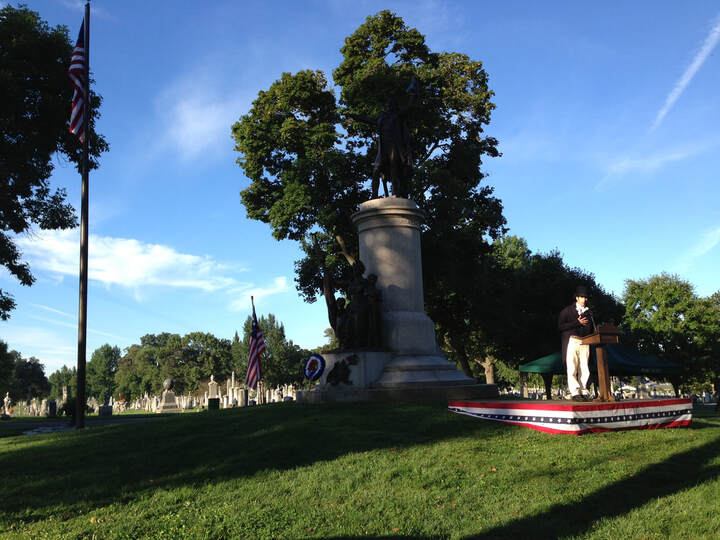
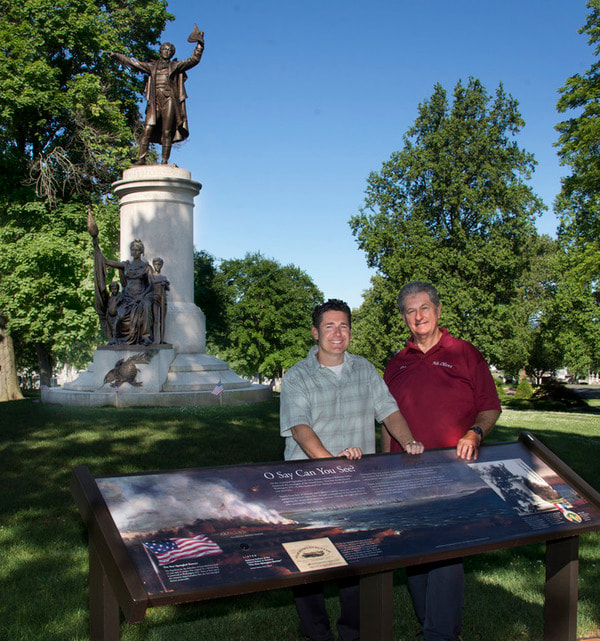


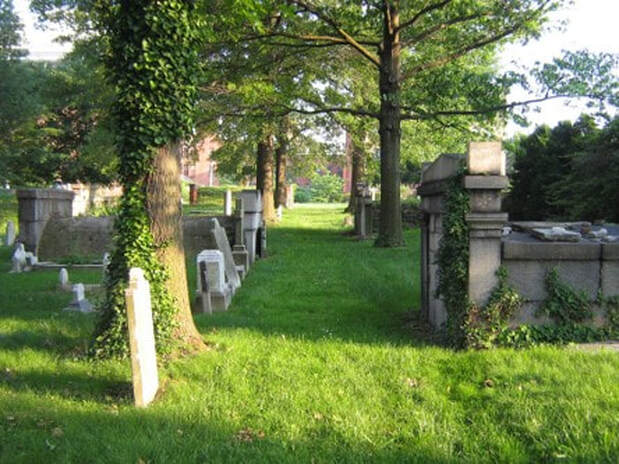
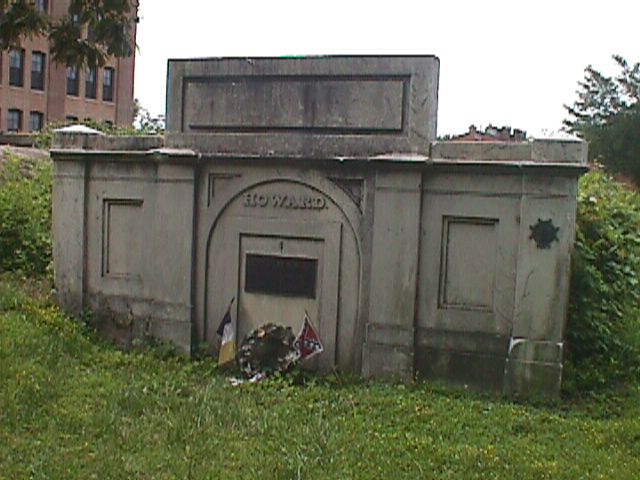

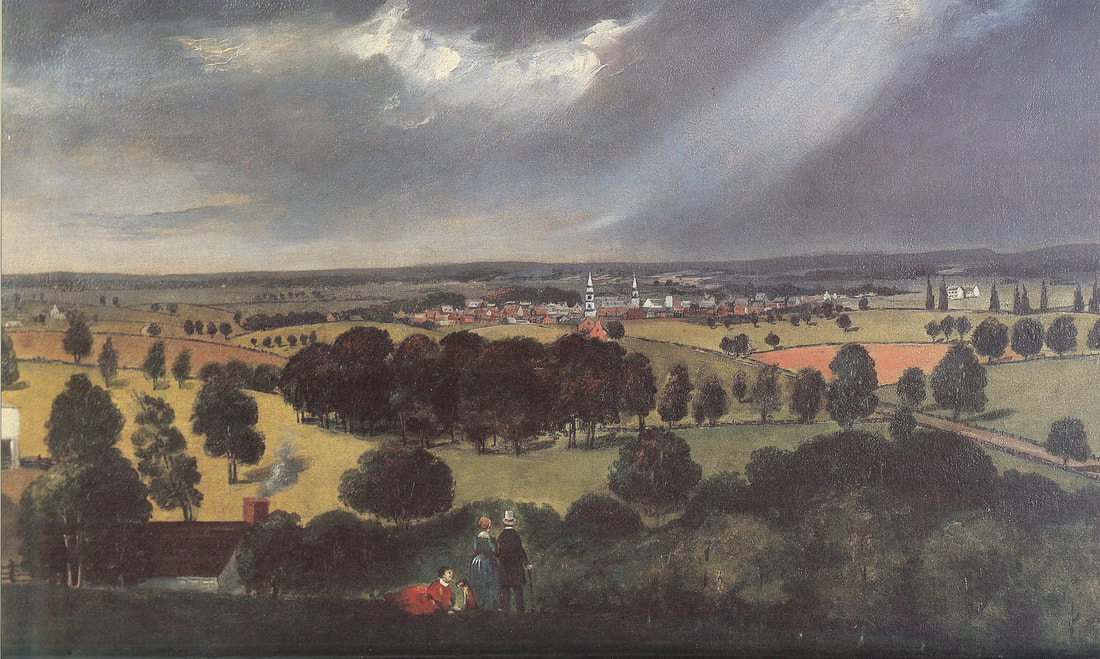
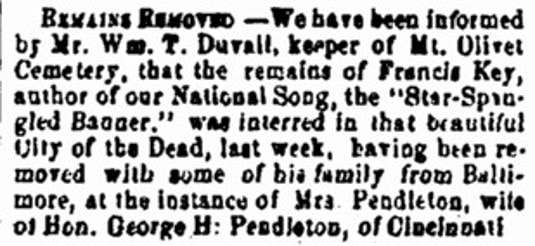
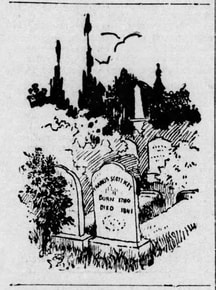
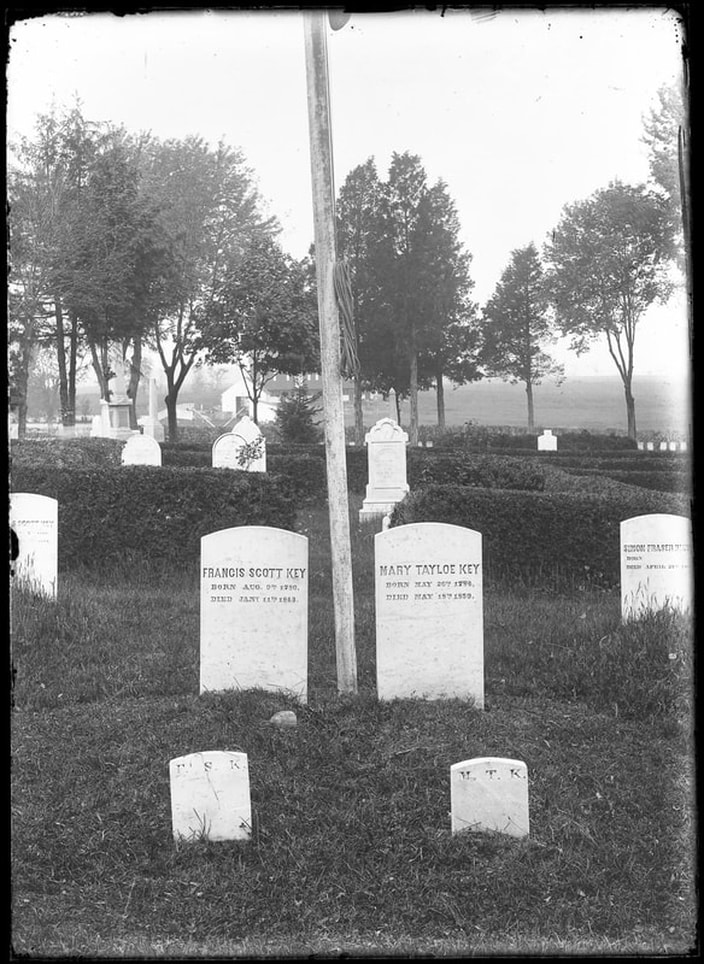
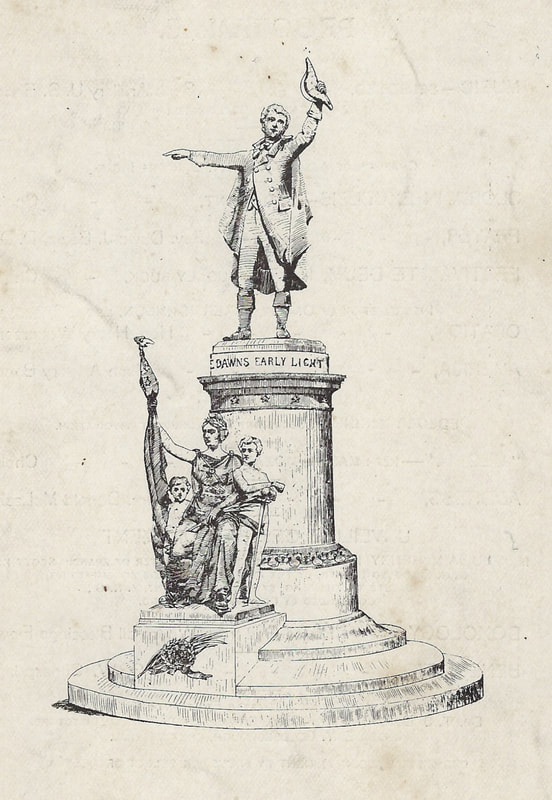
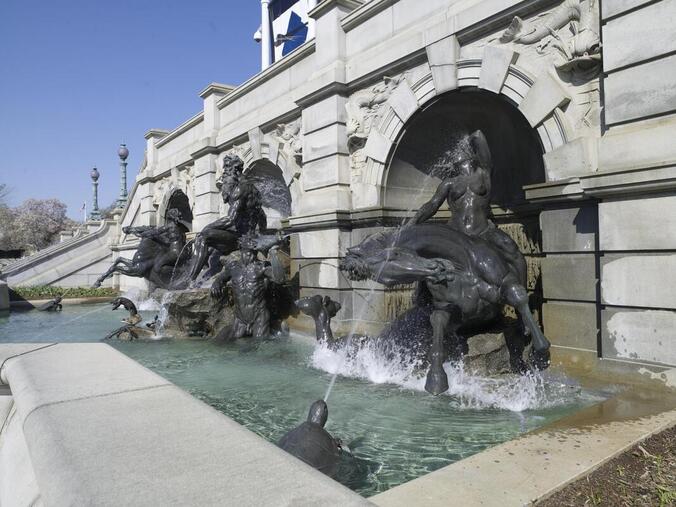
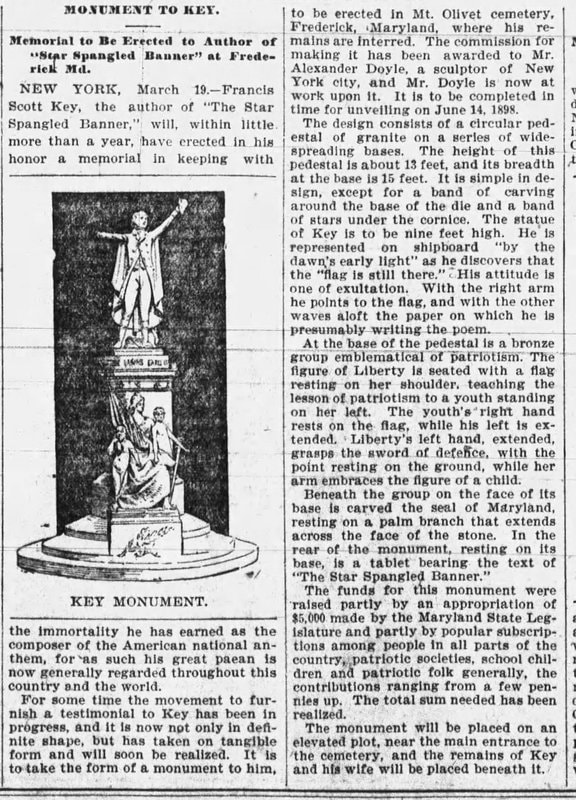
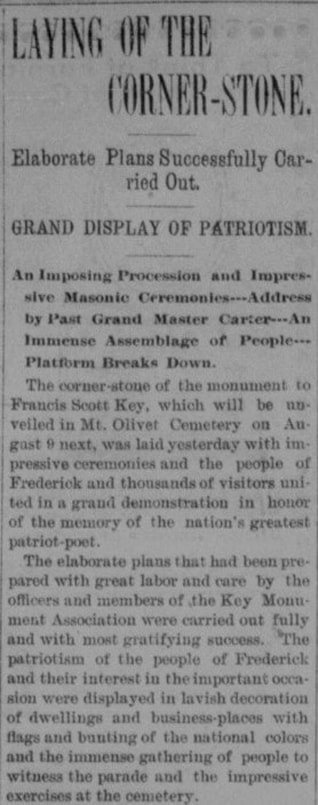
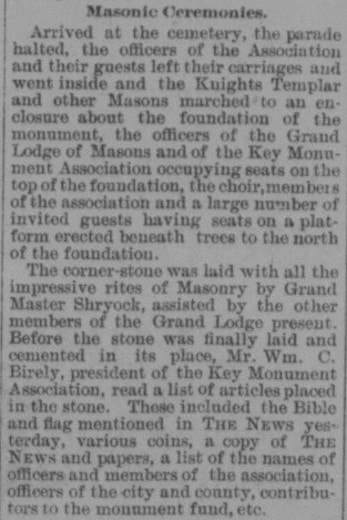

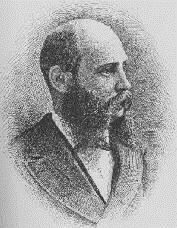
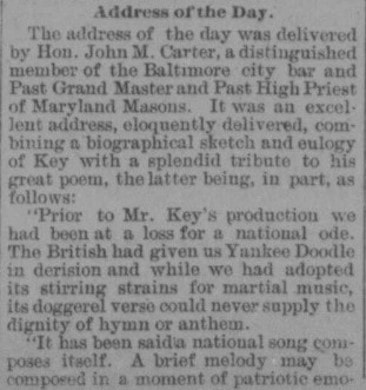
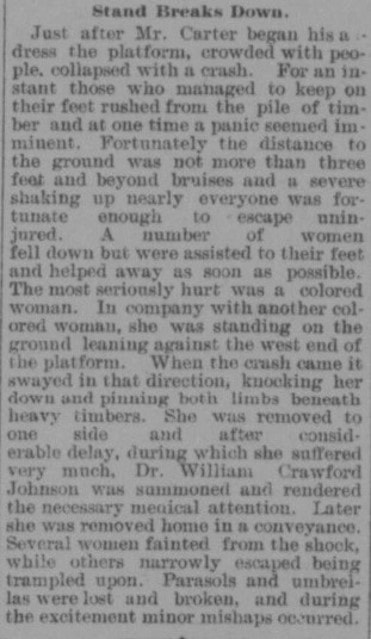


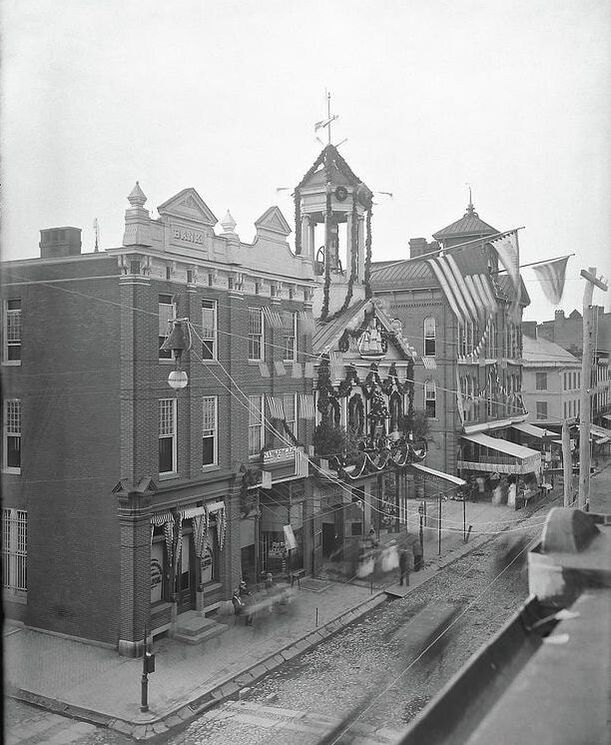
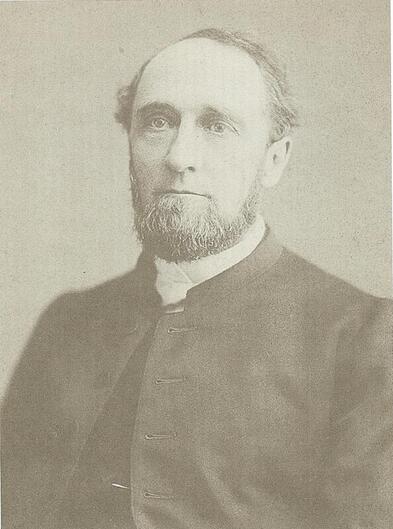
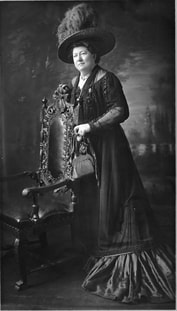
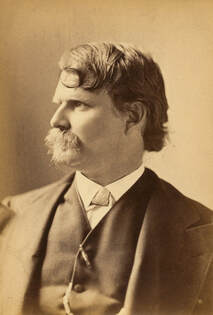
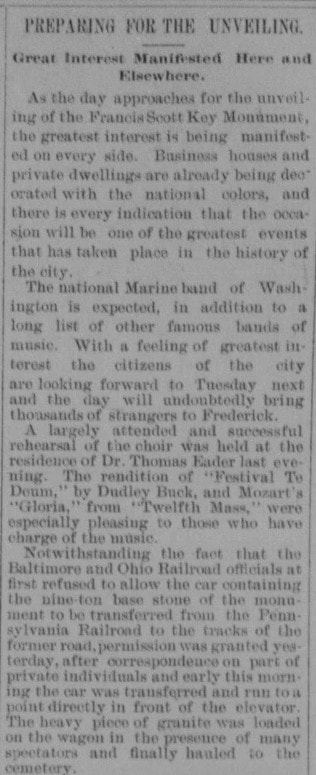
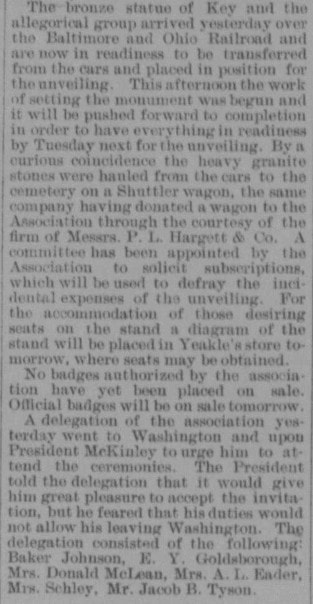
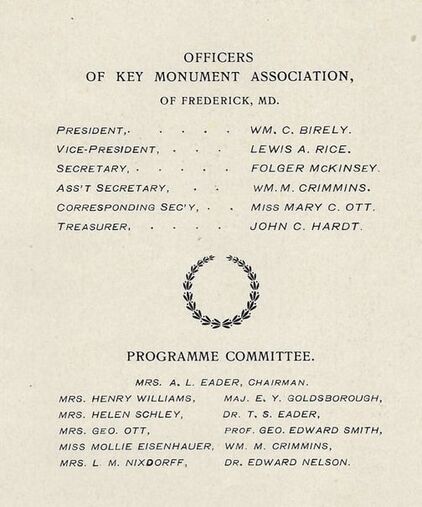
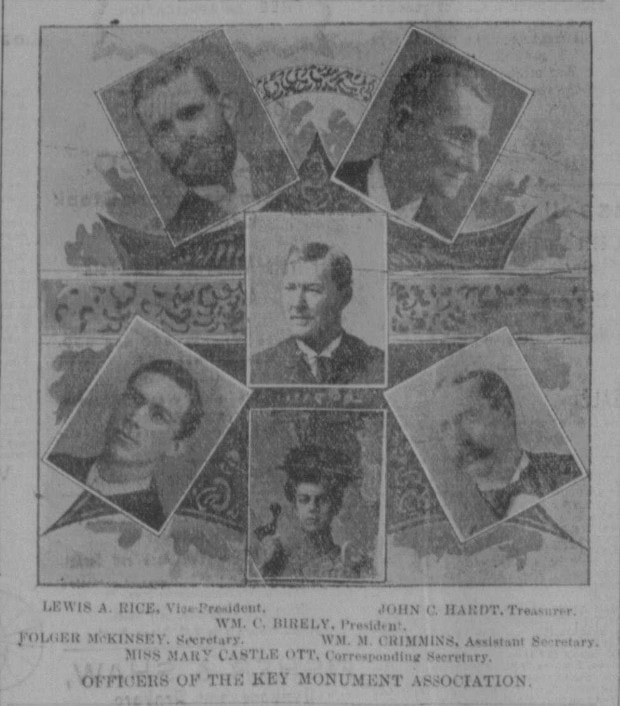

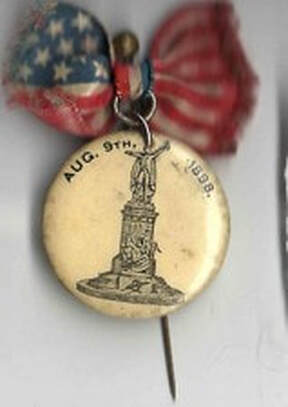
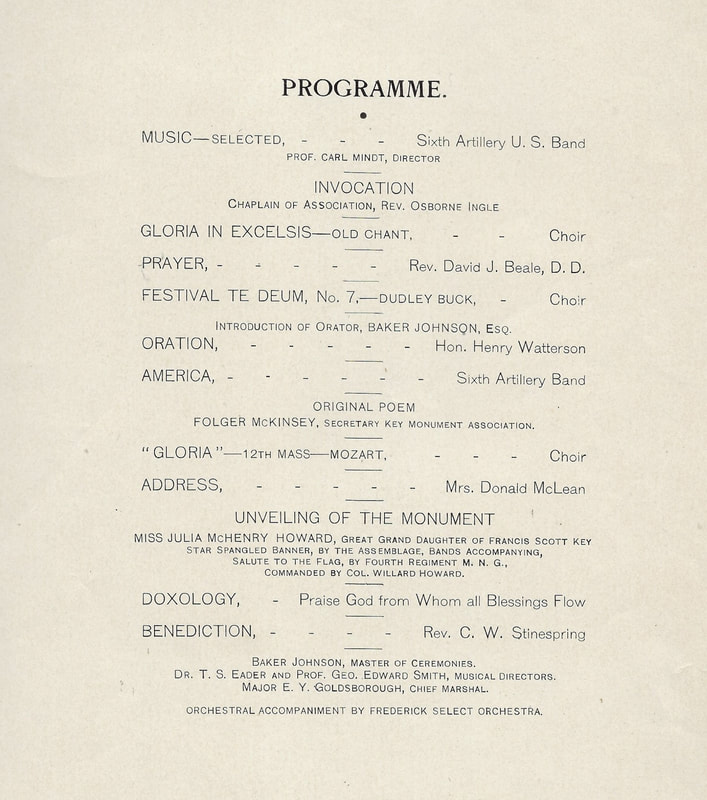
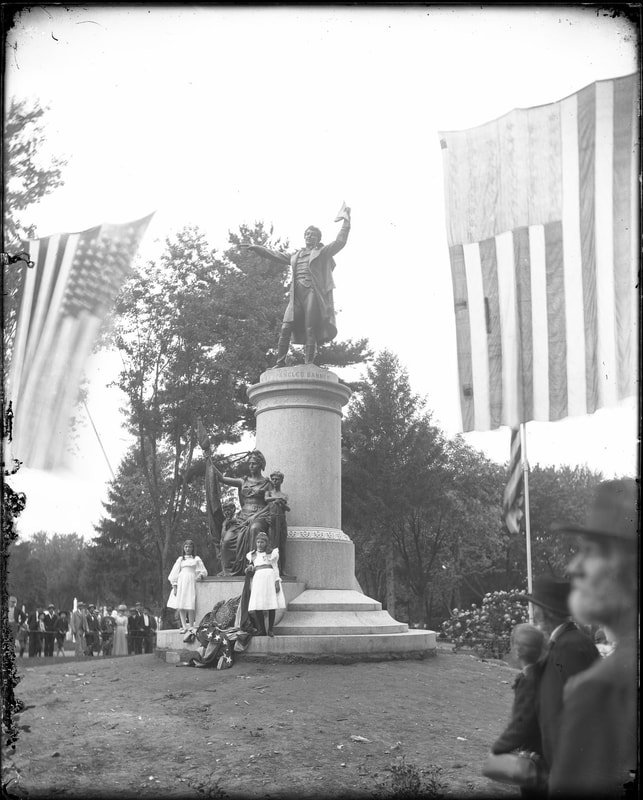
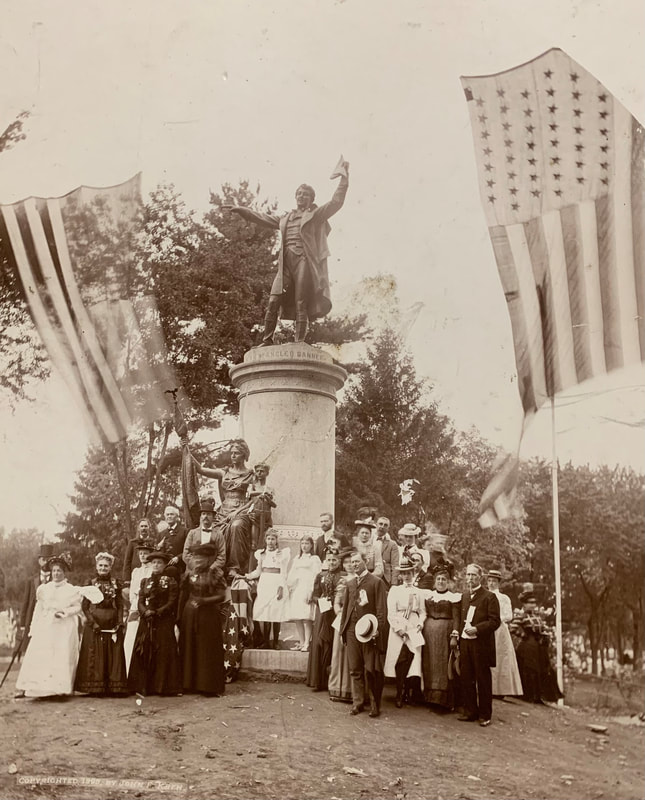
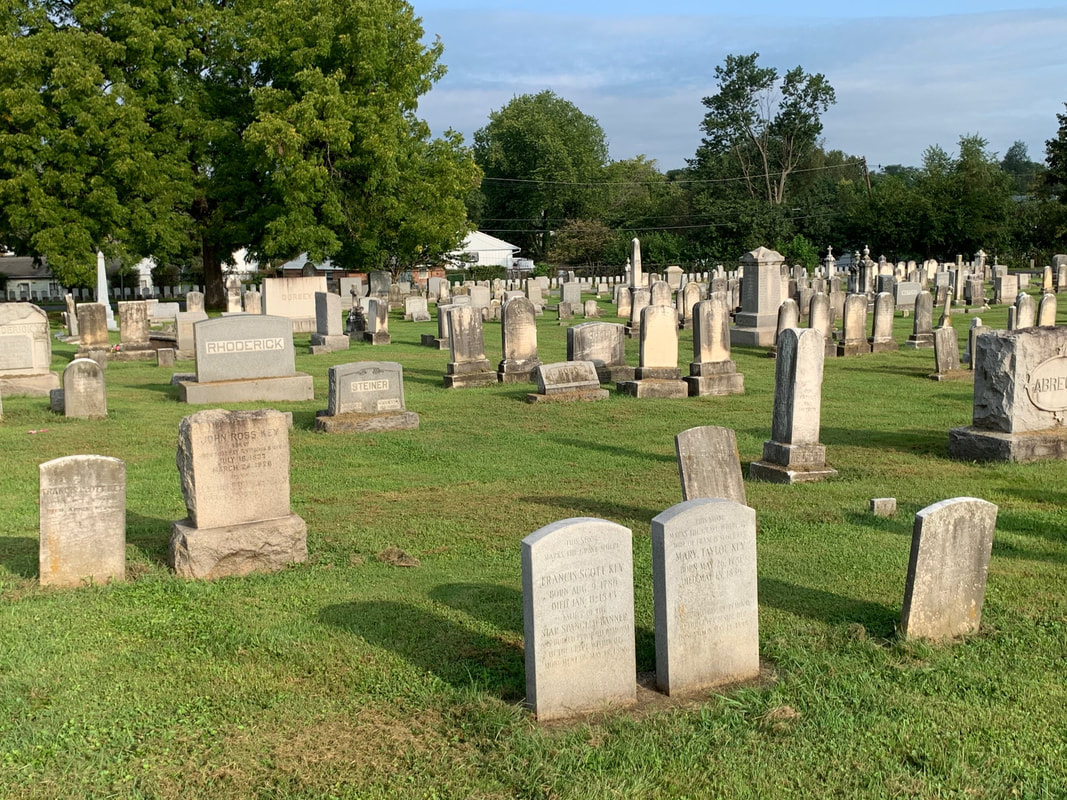
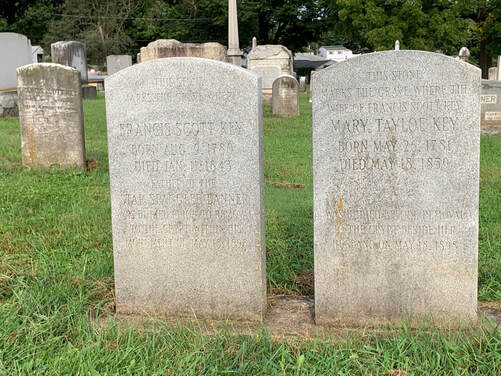
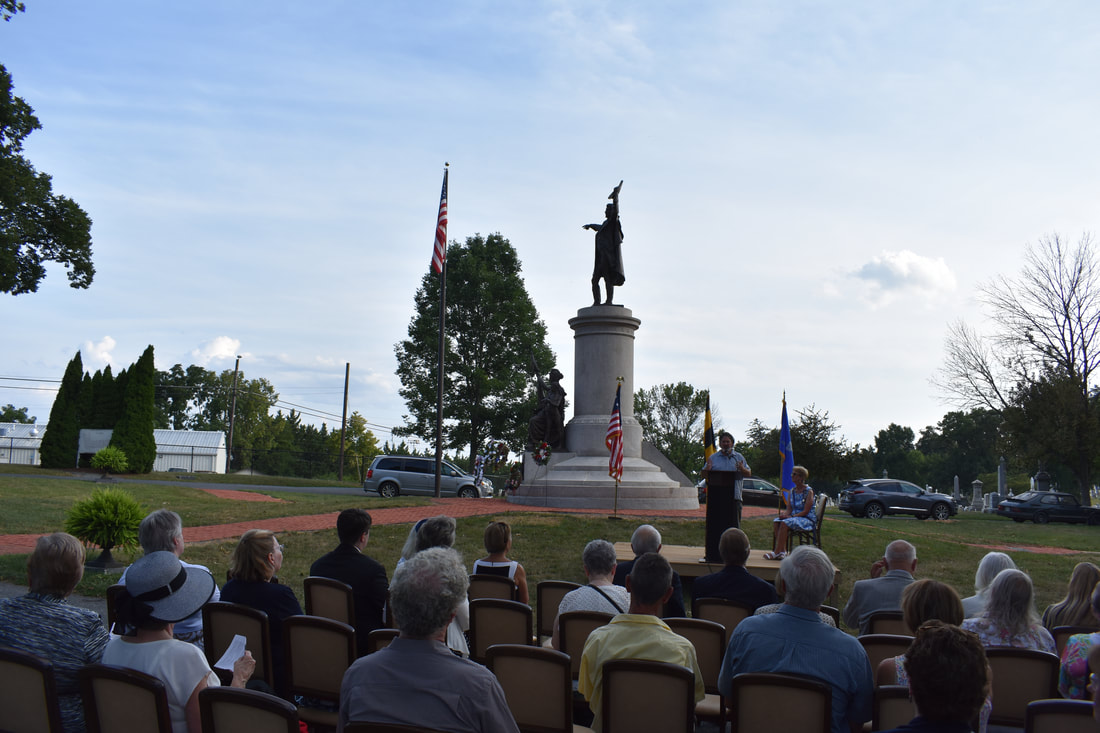


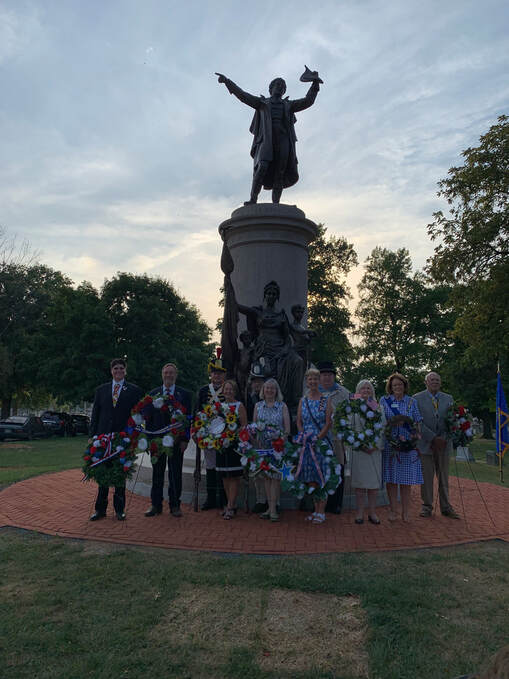
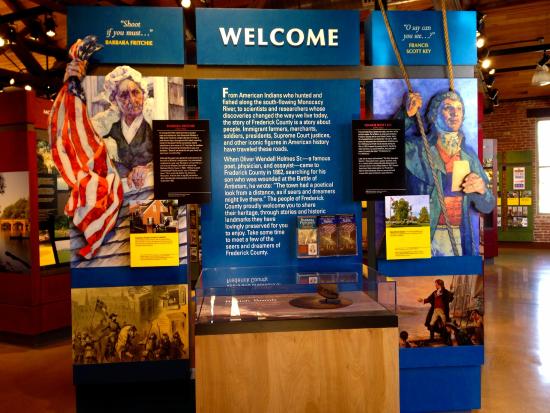
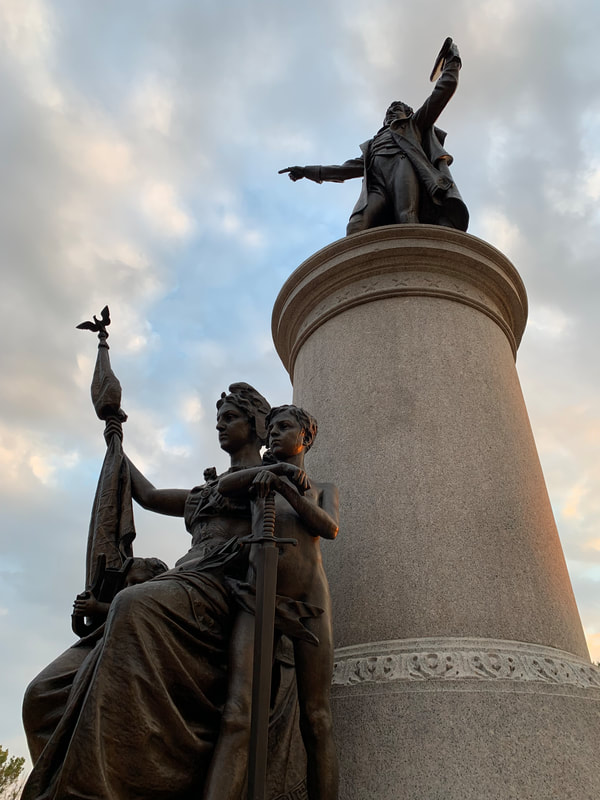
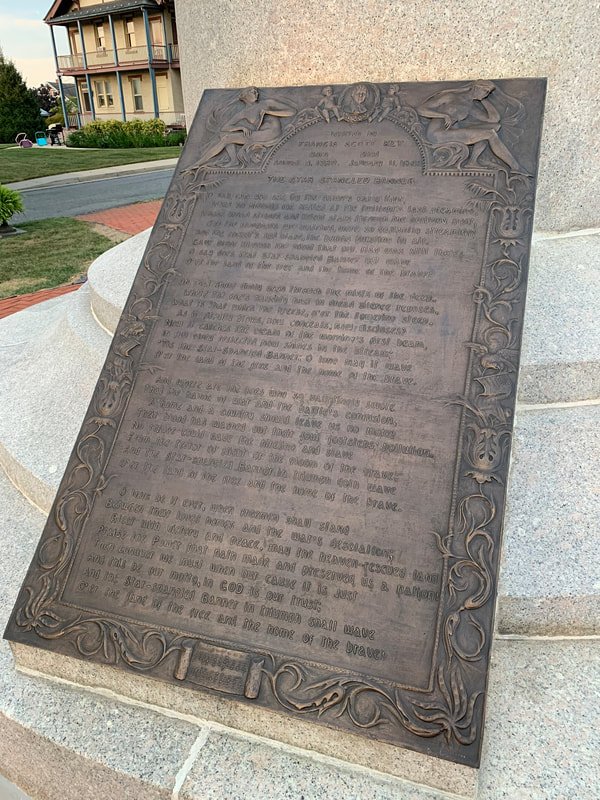
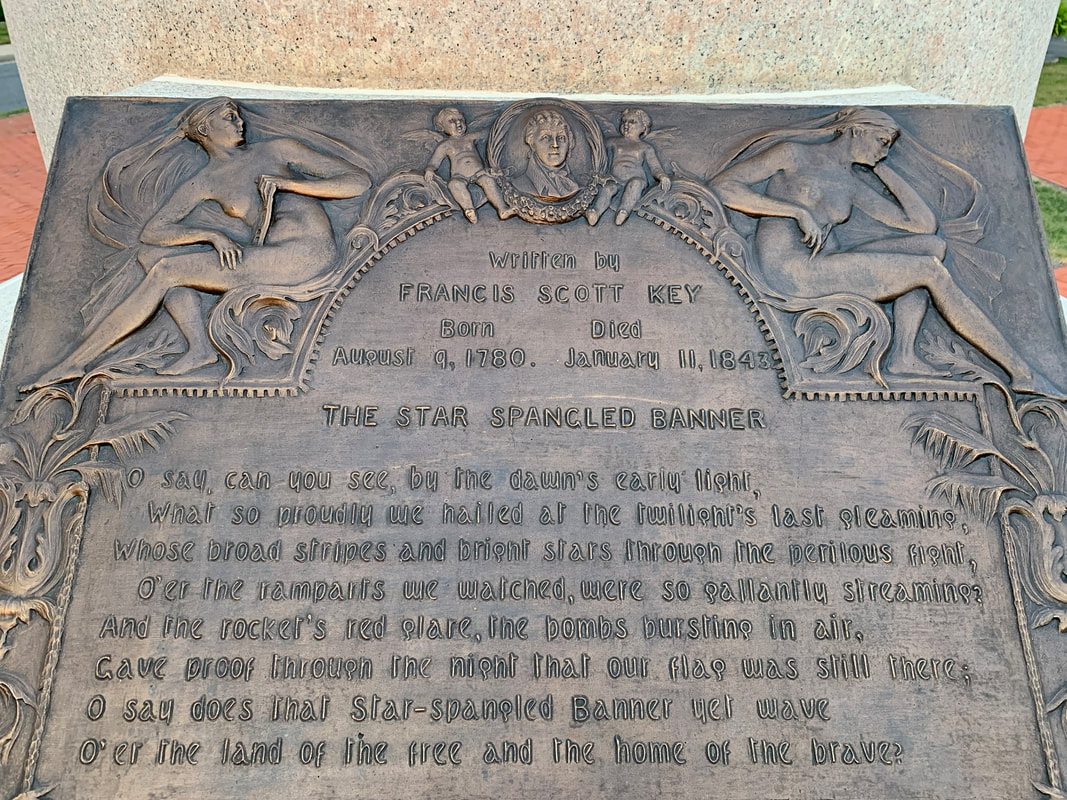
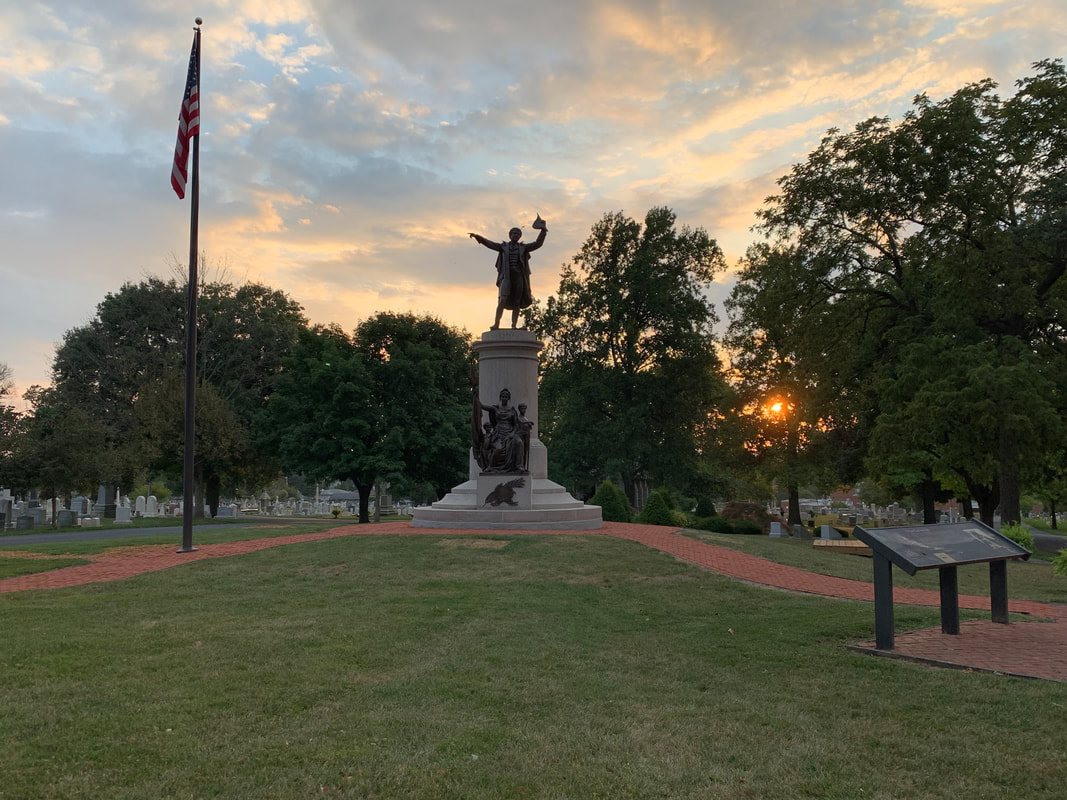
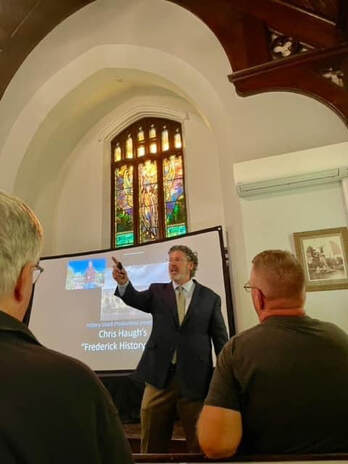
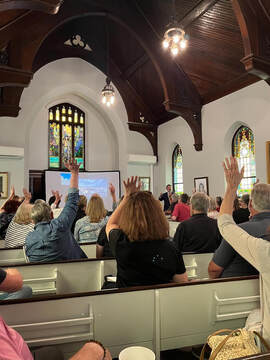
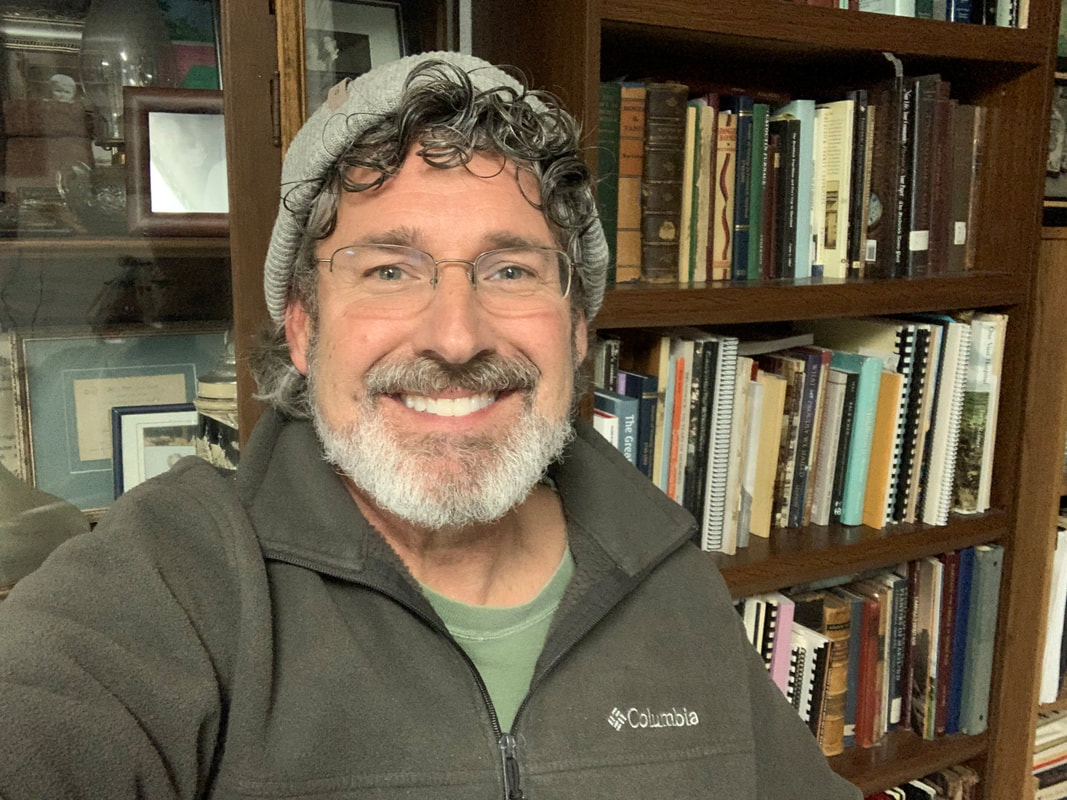
 RSS Feed
RSS Feed